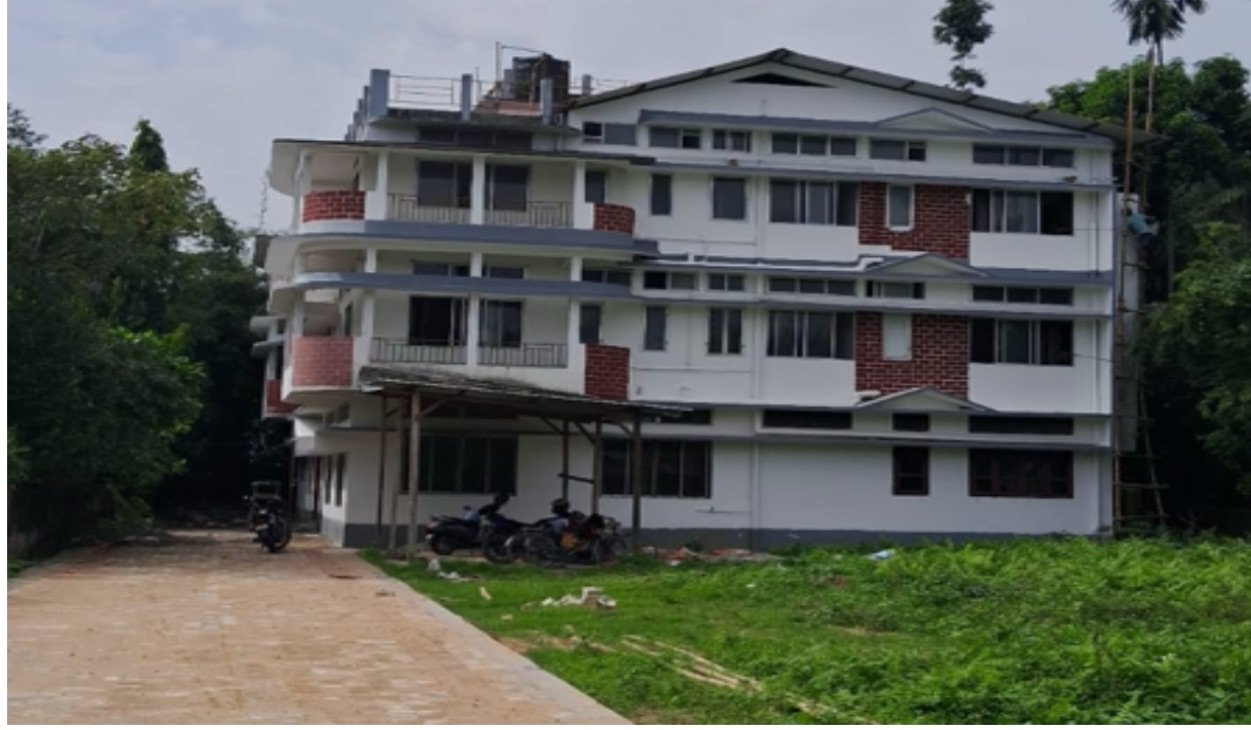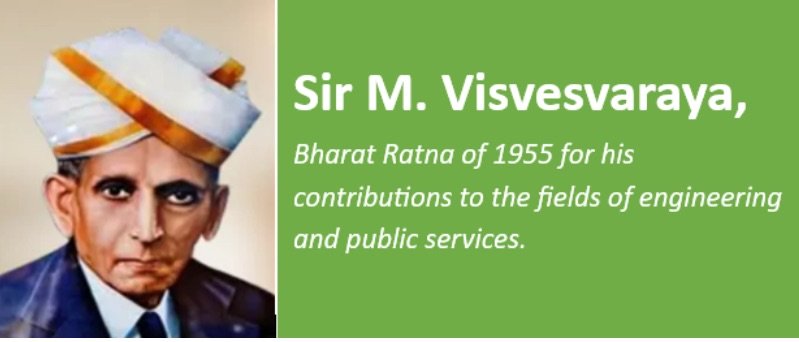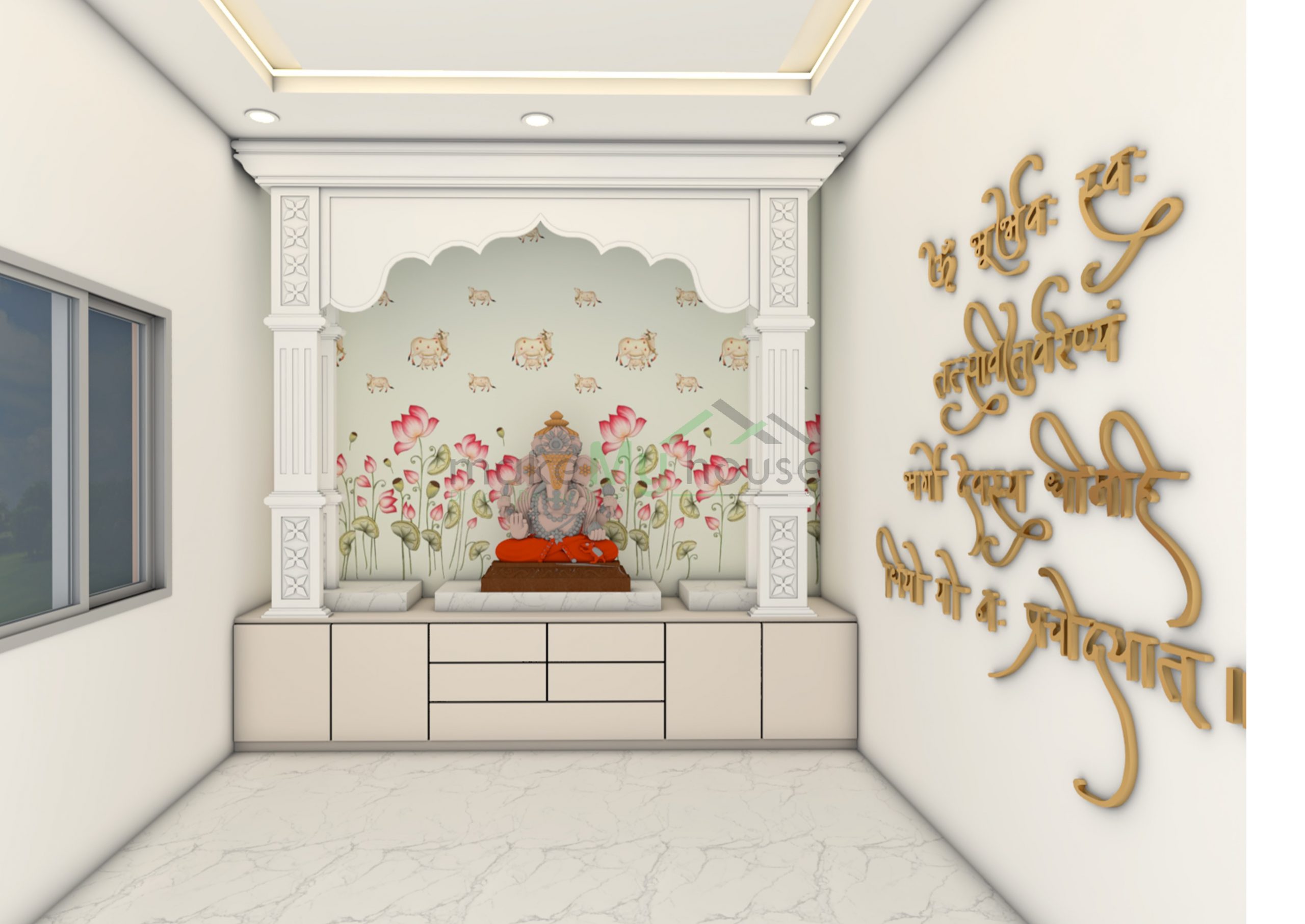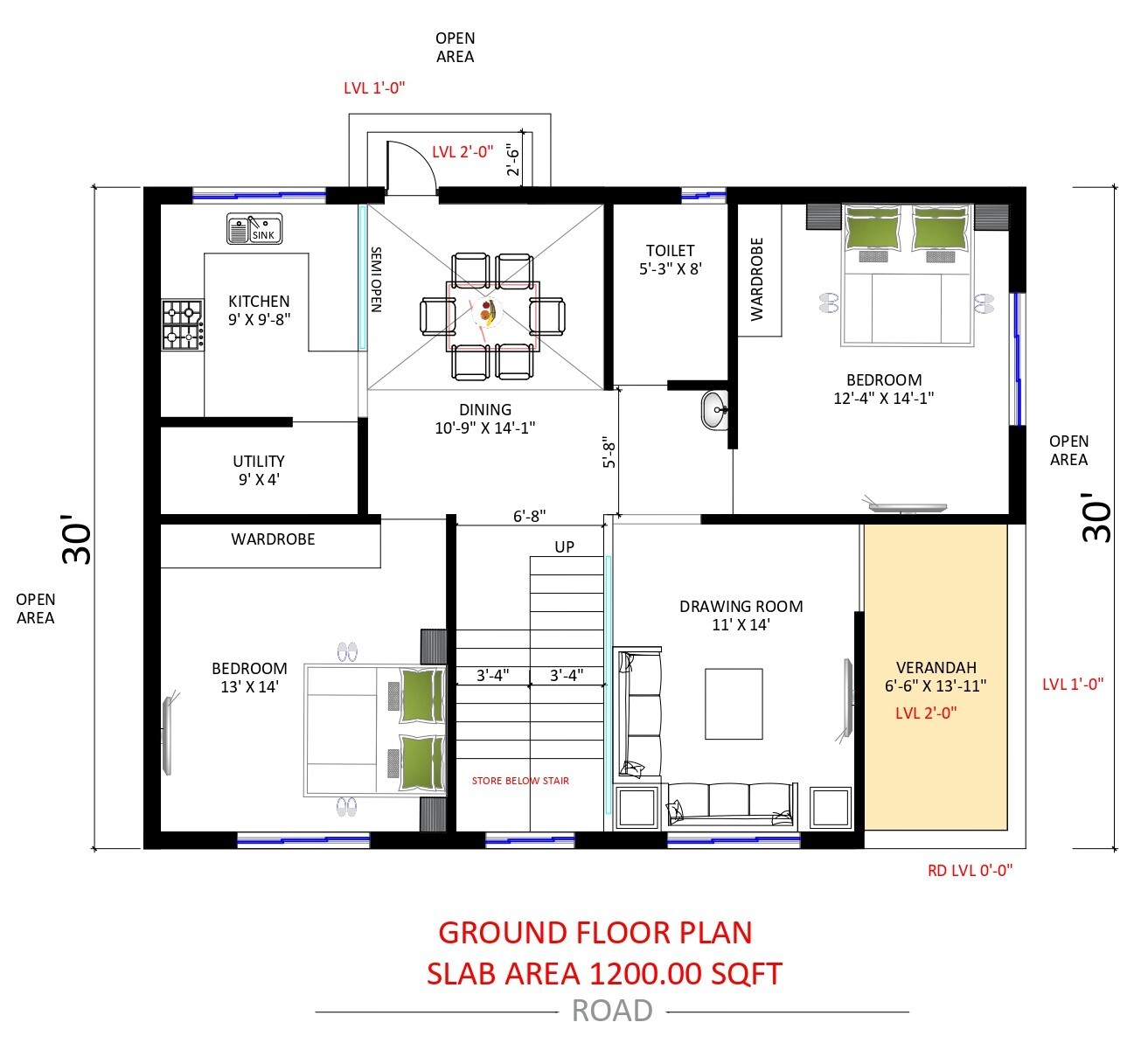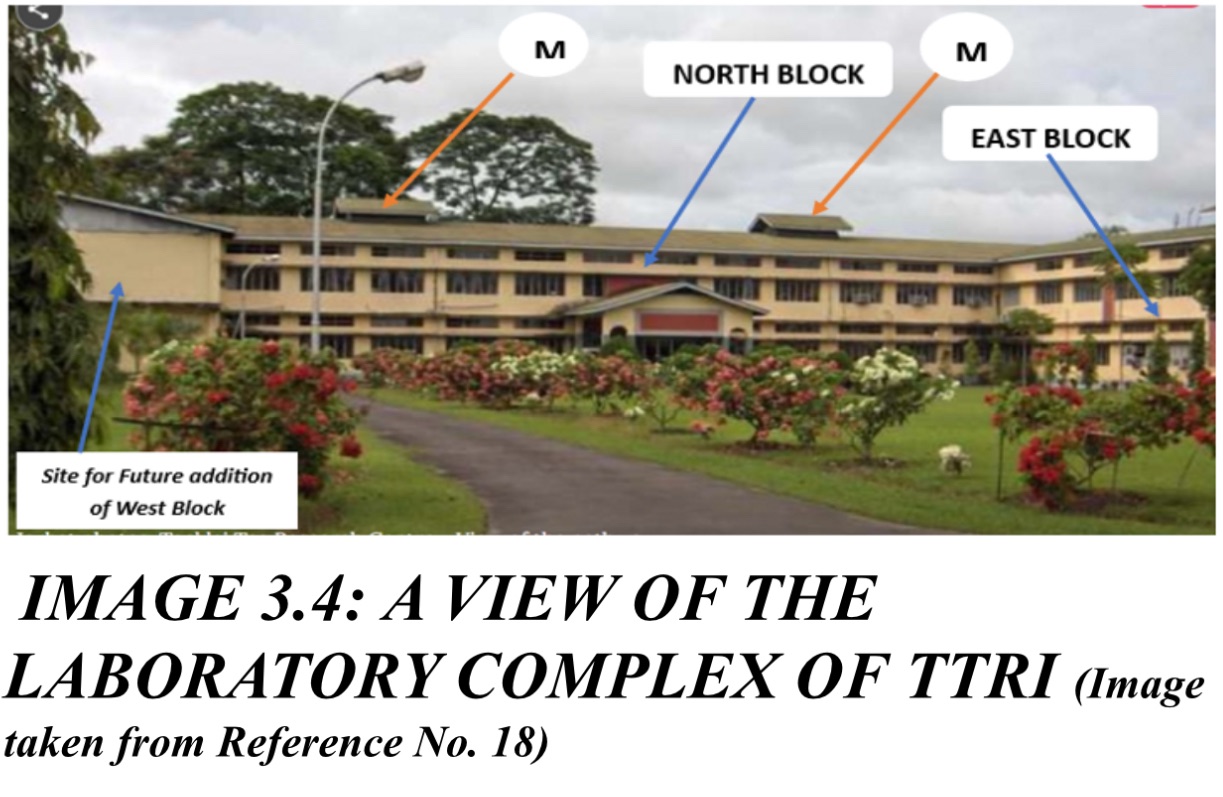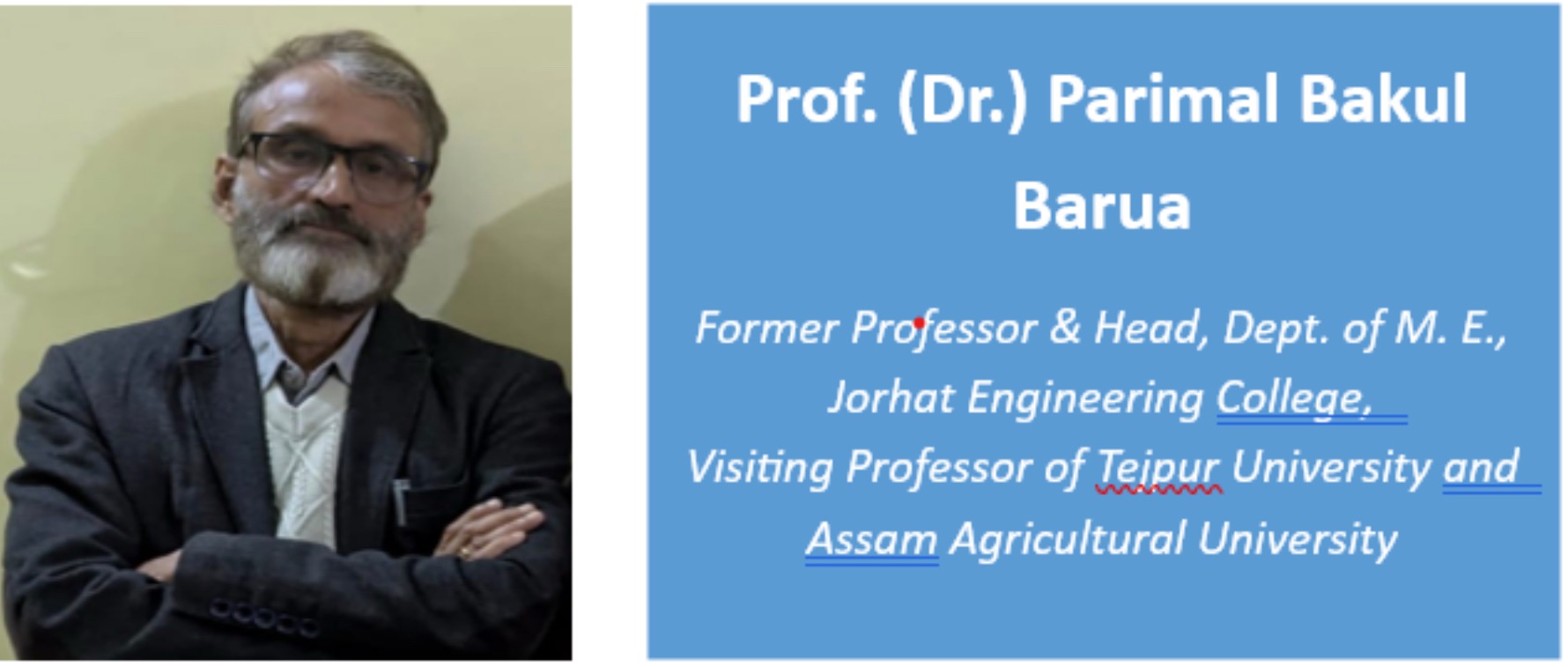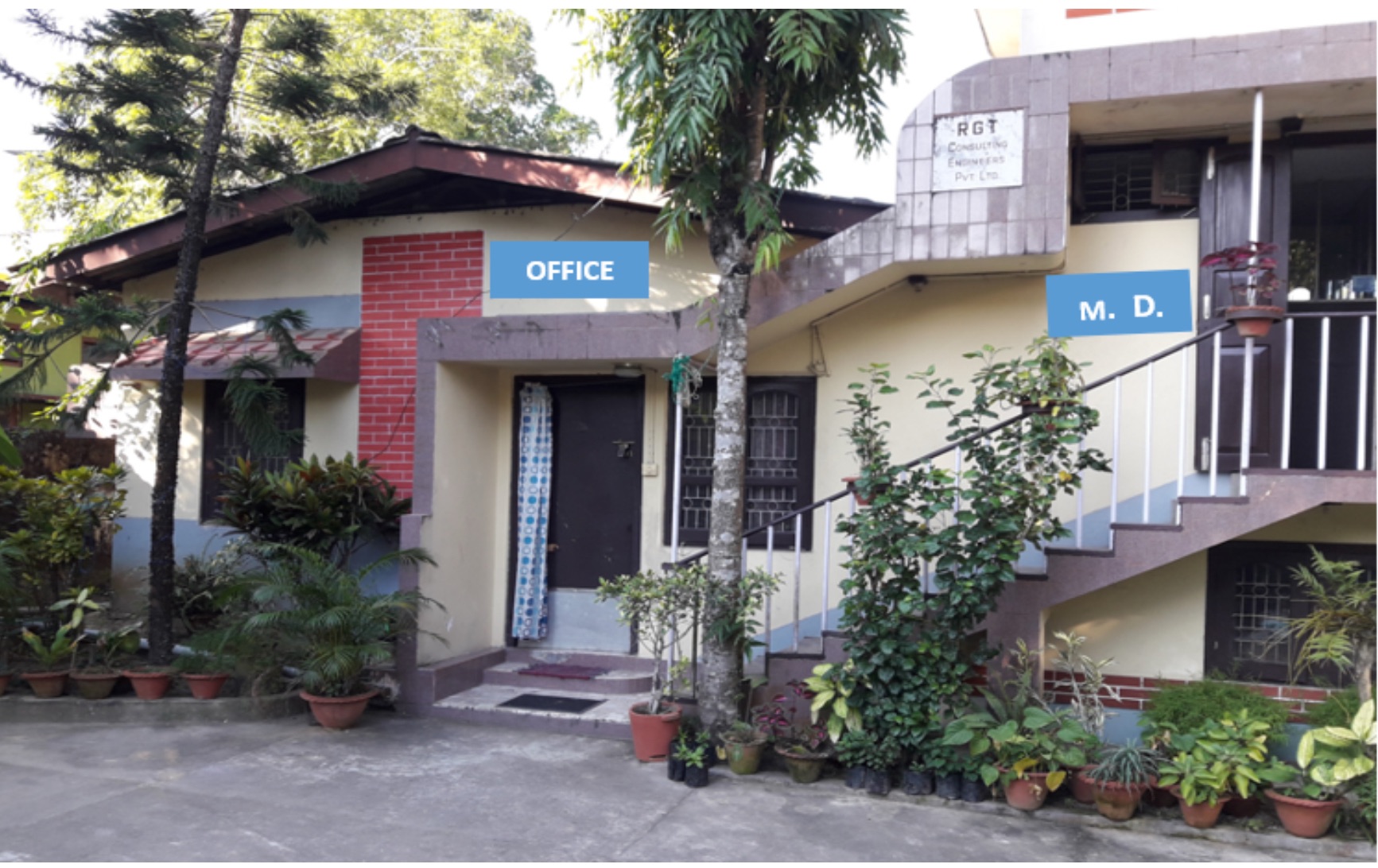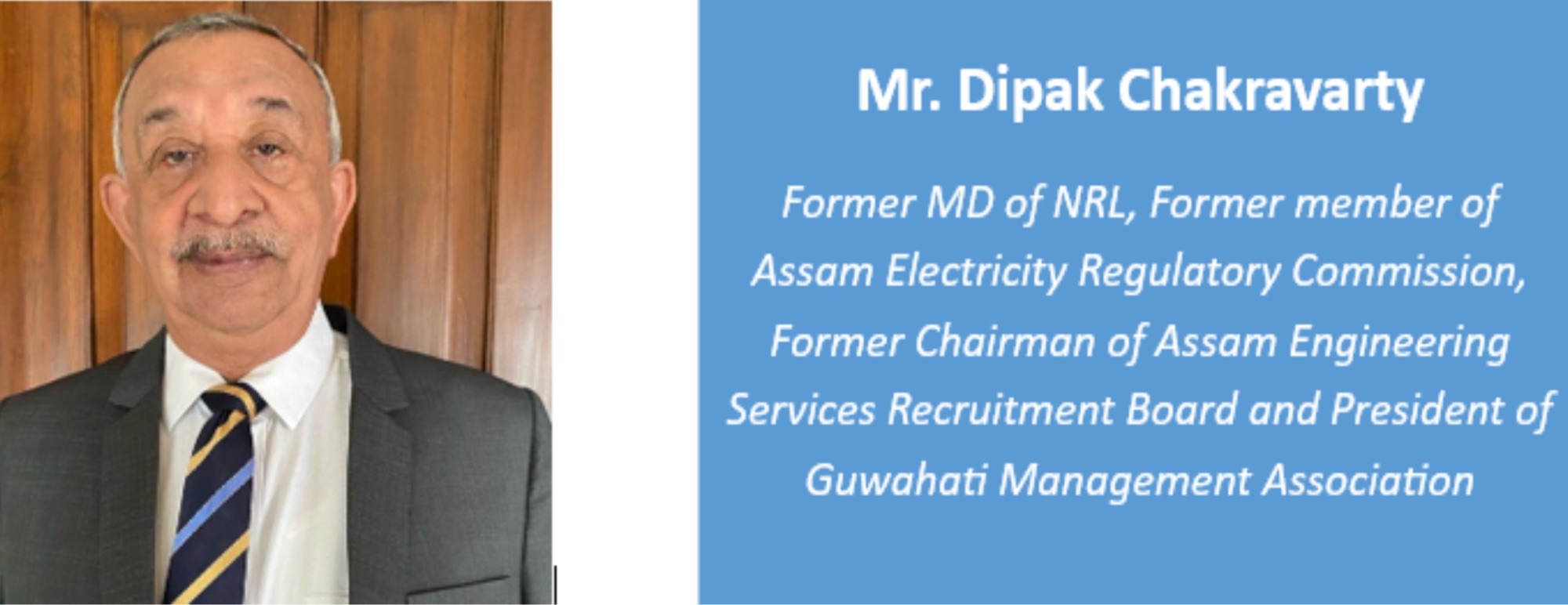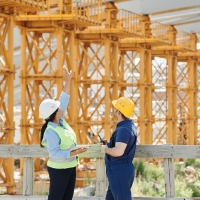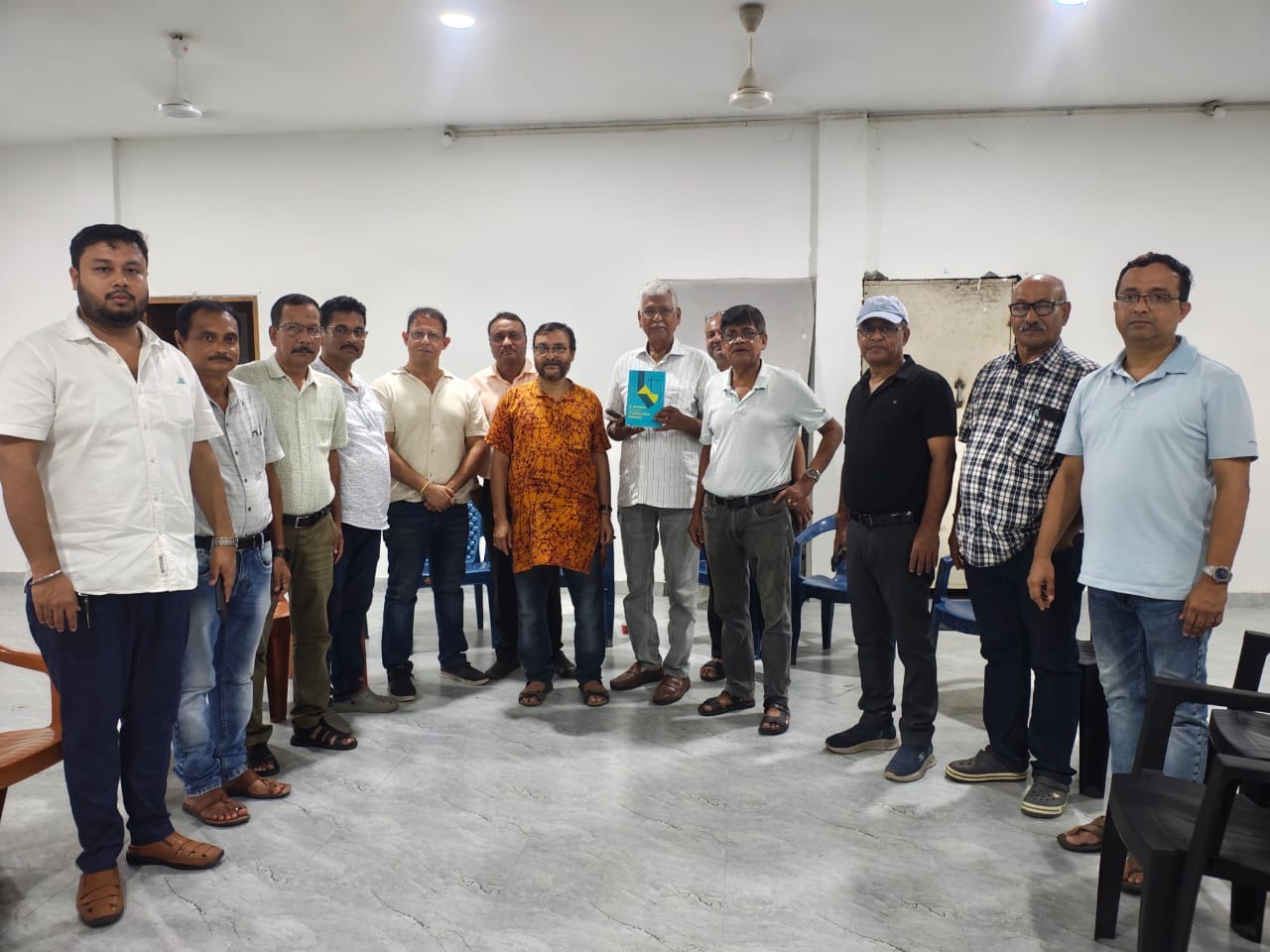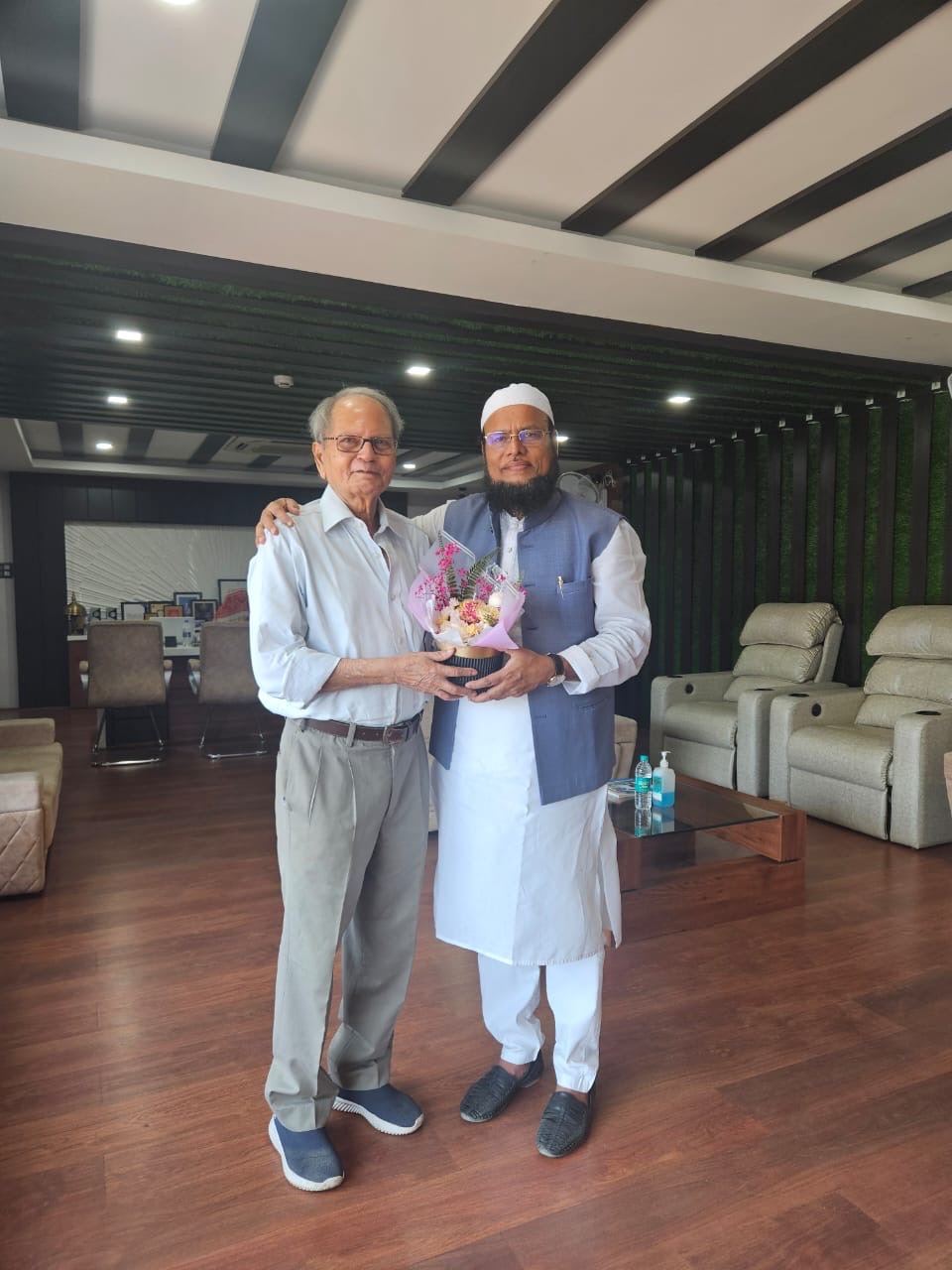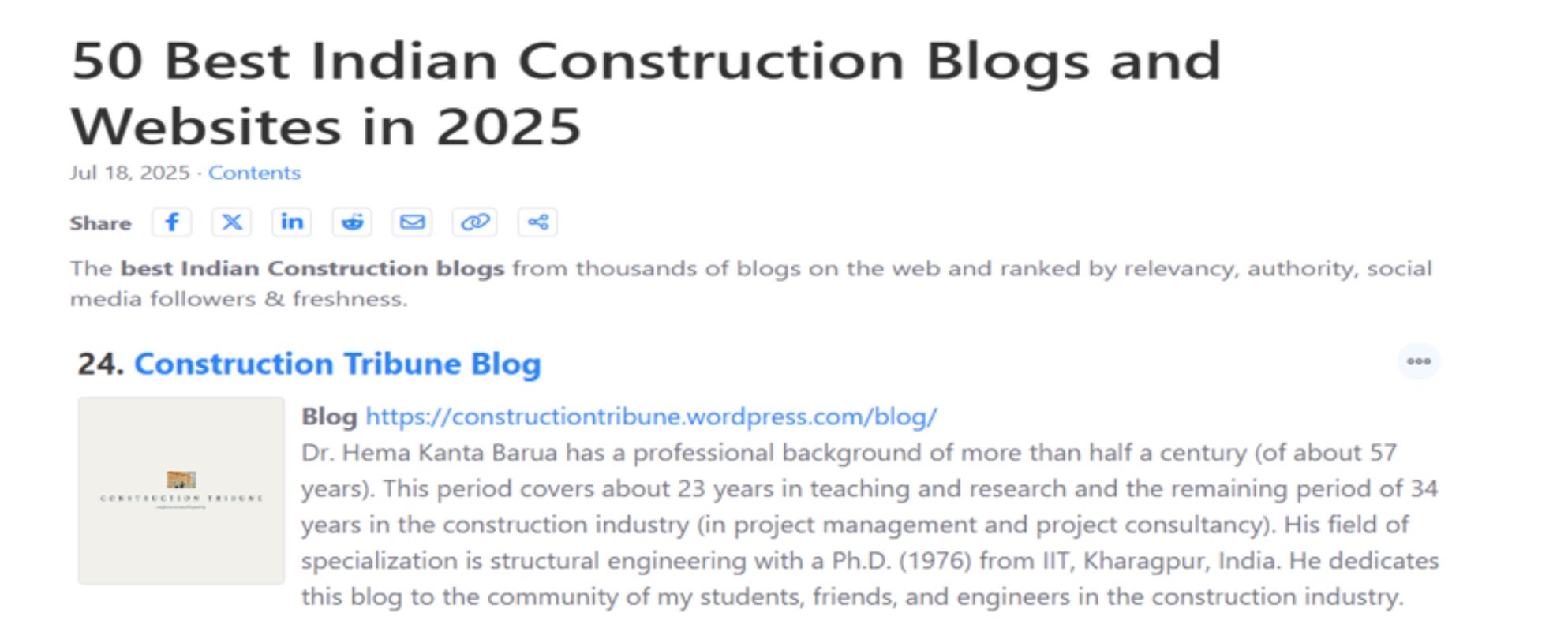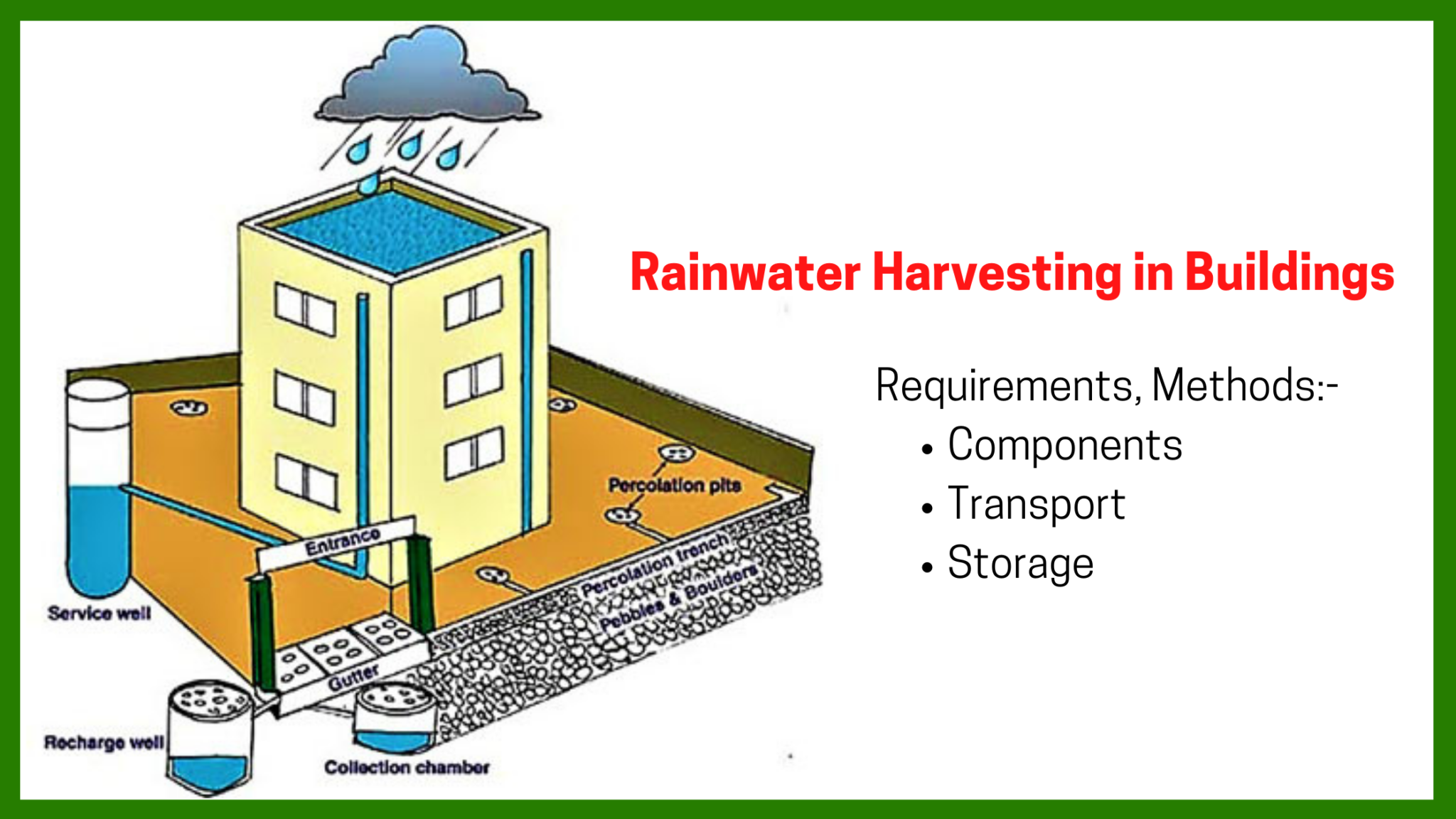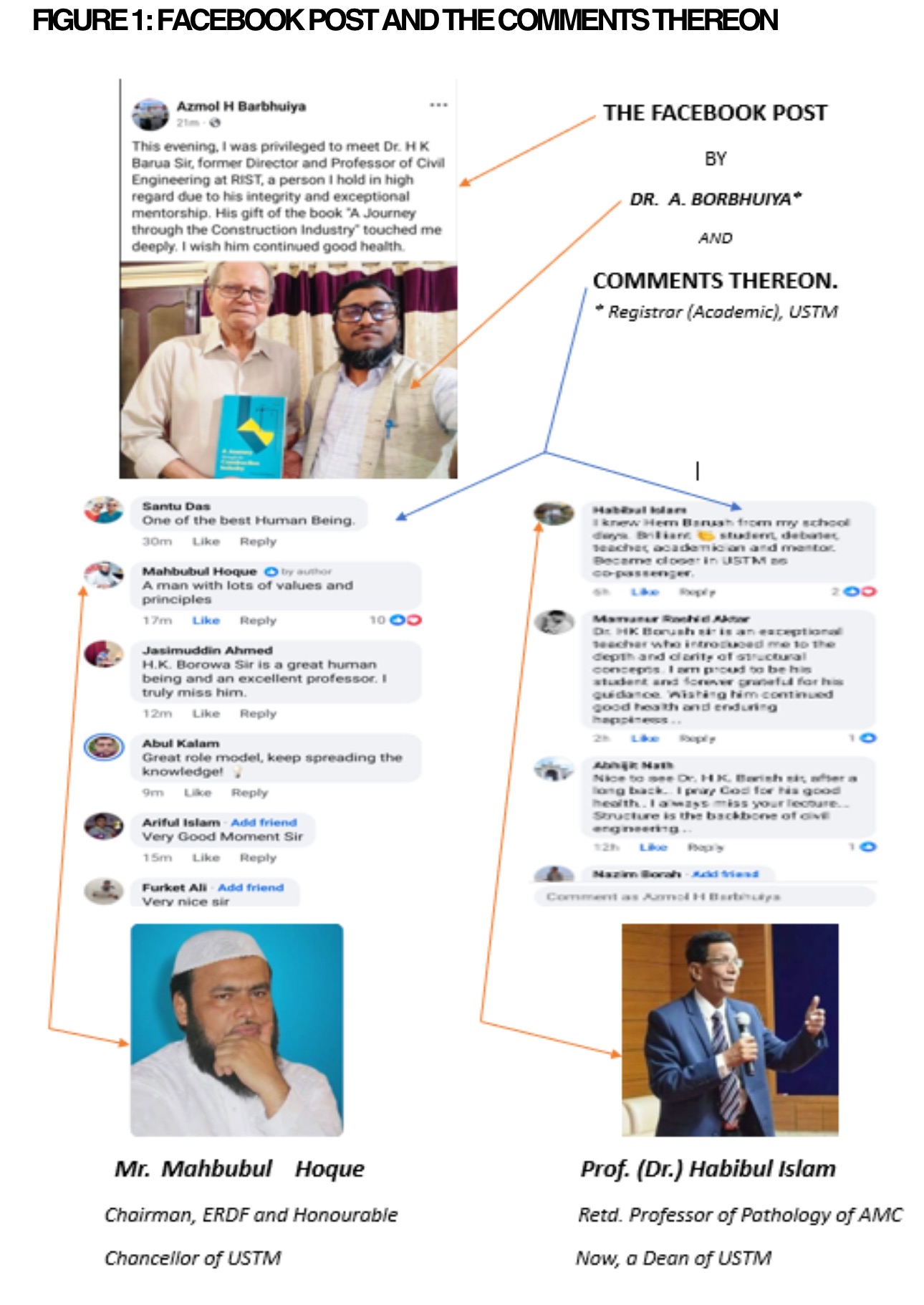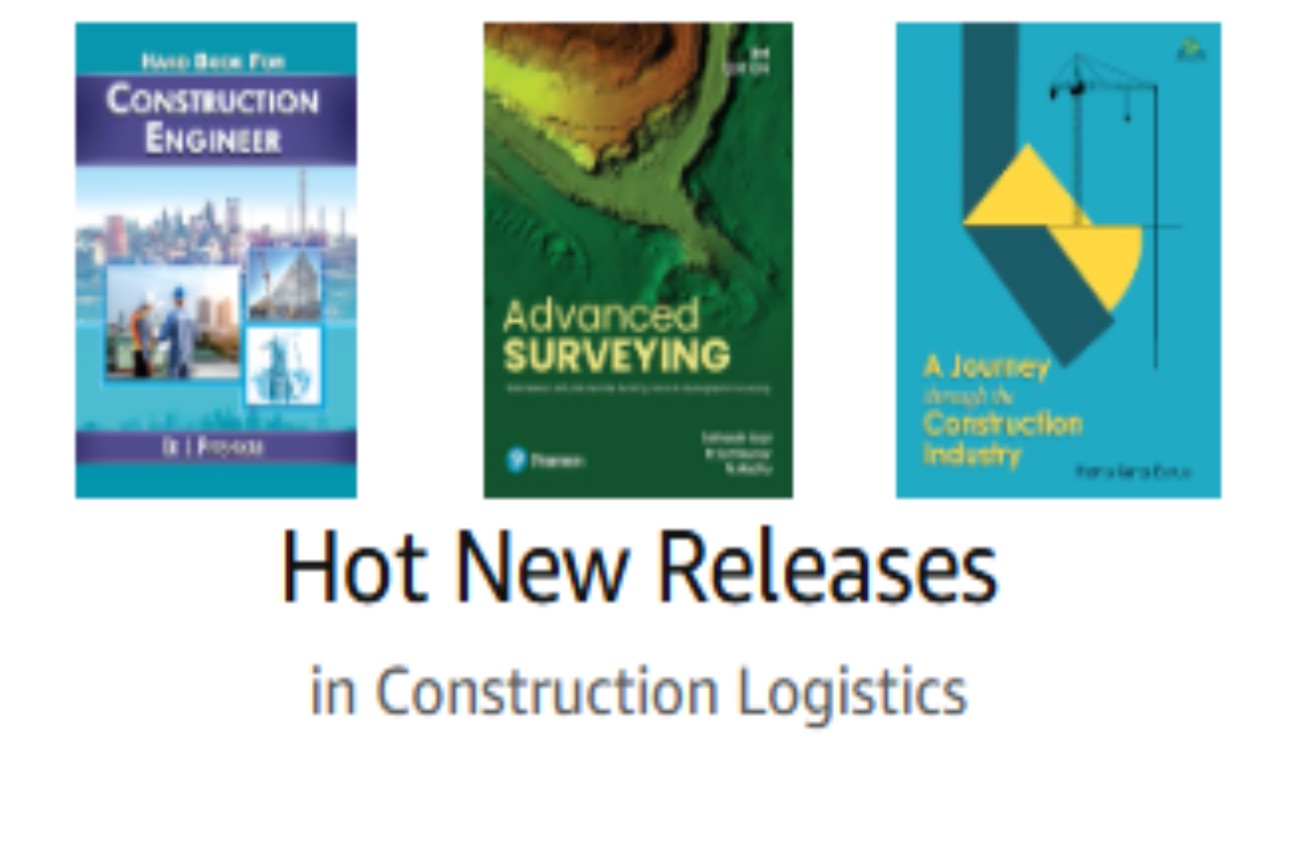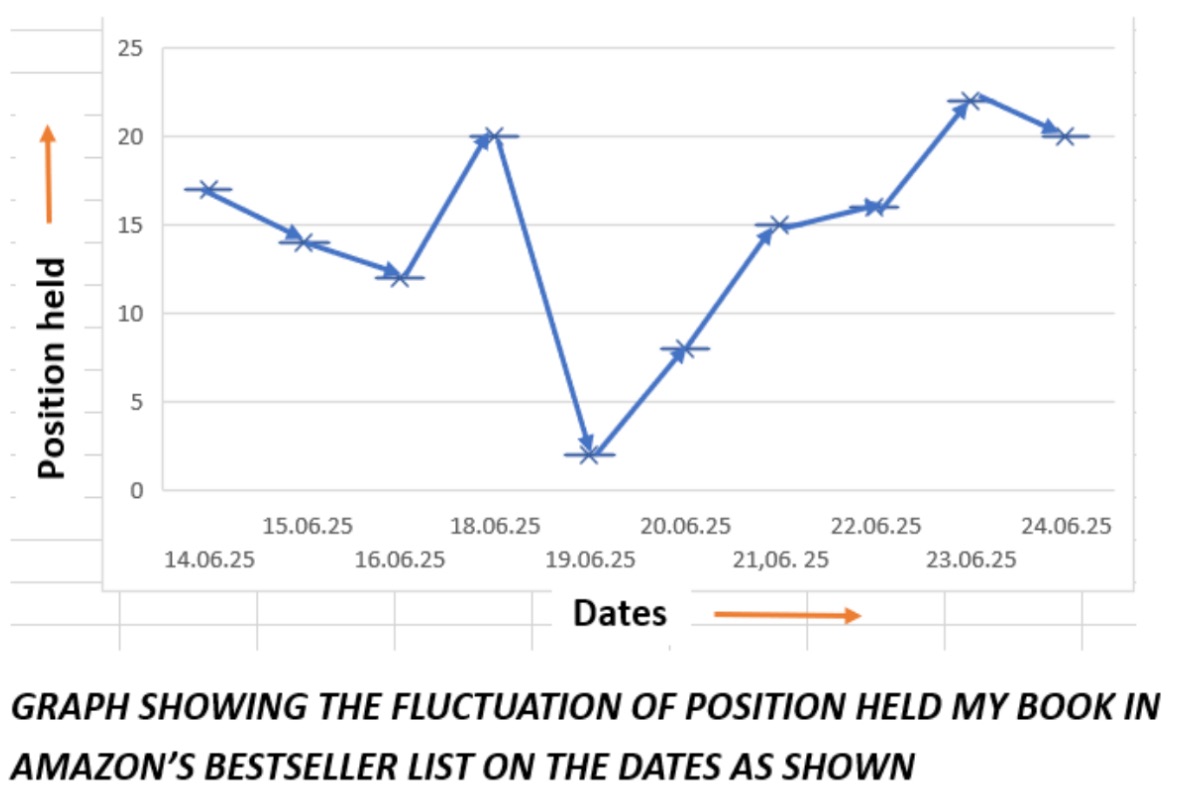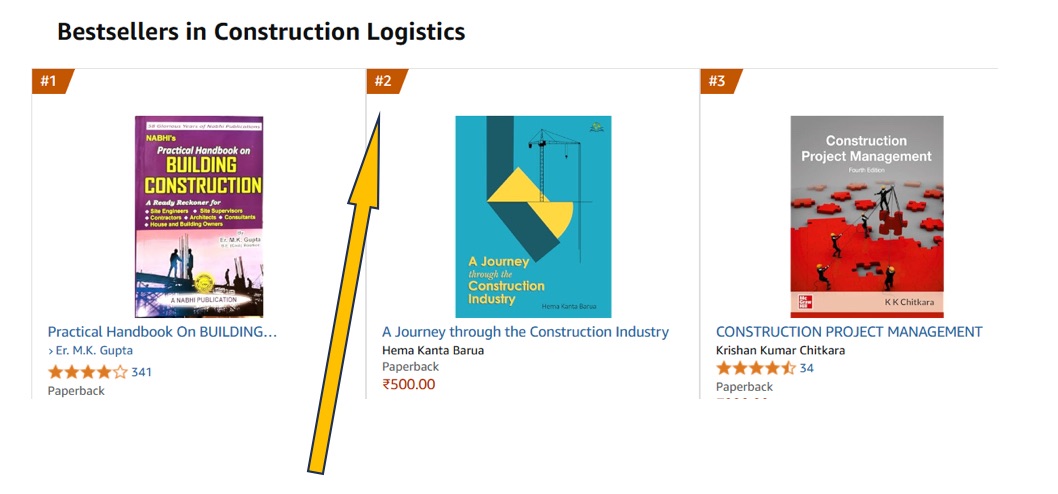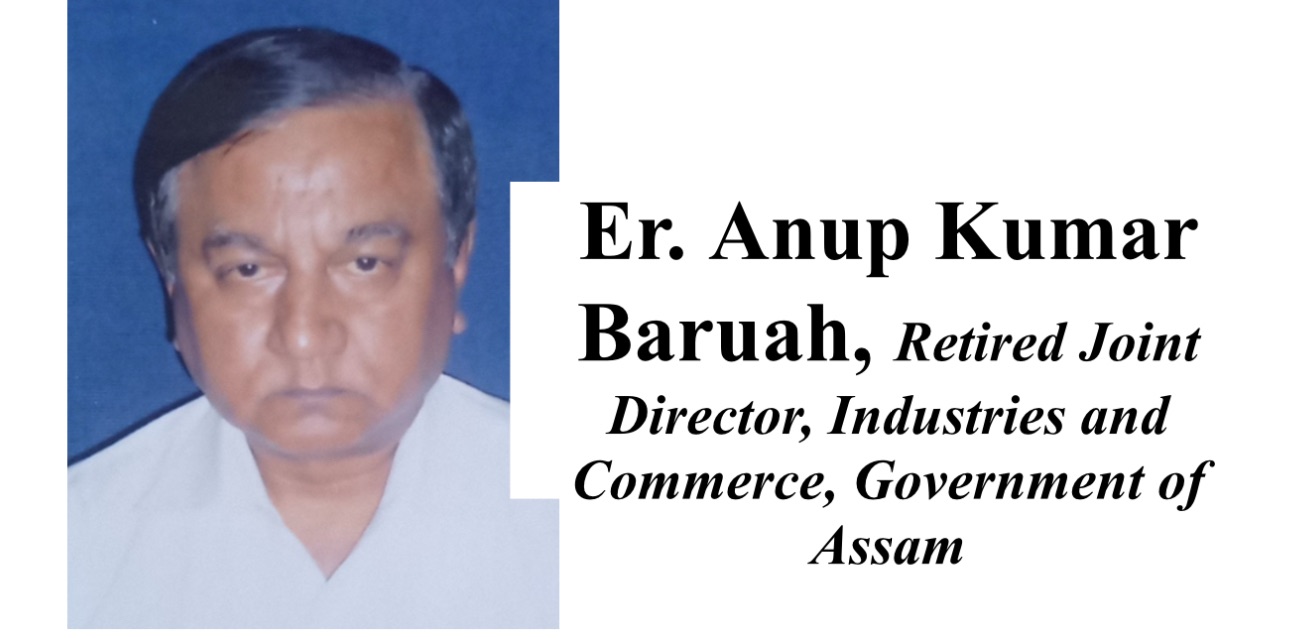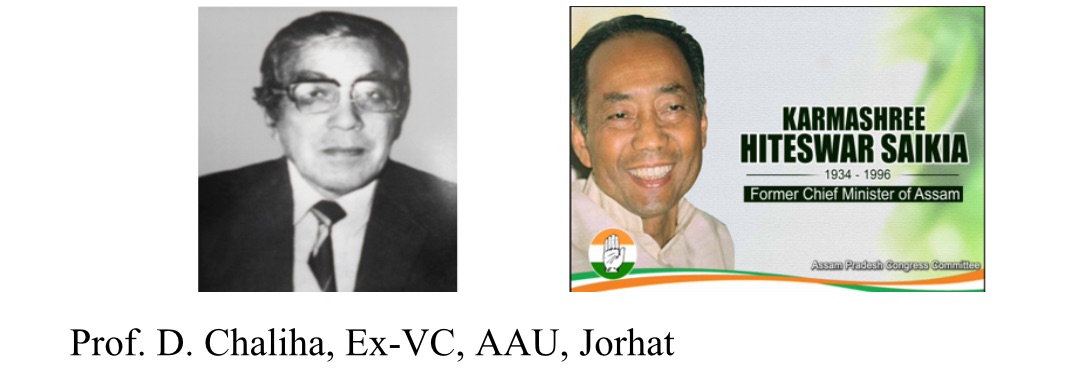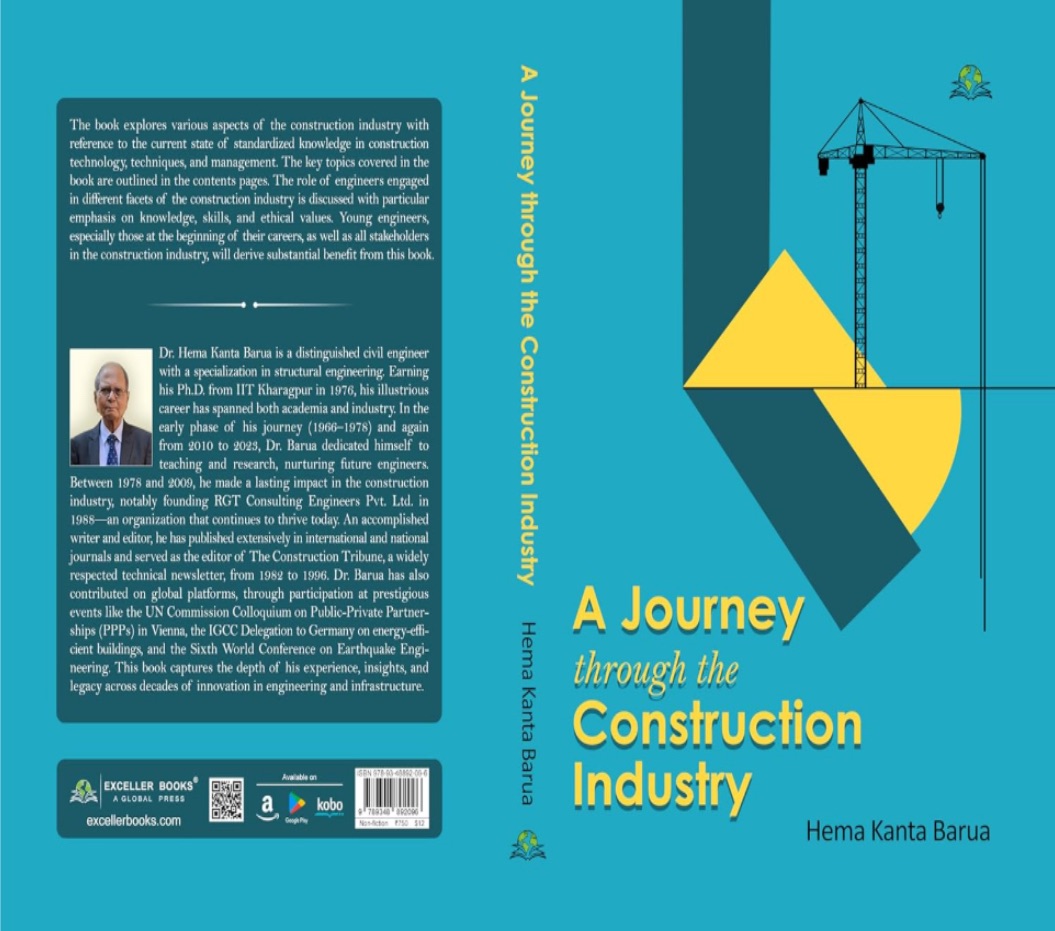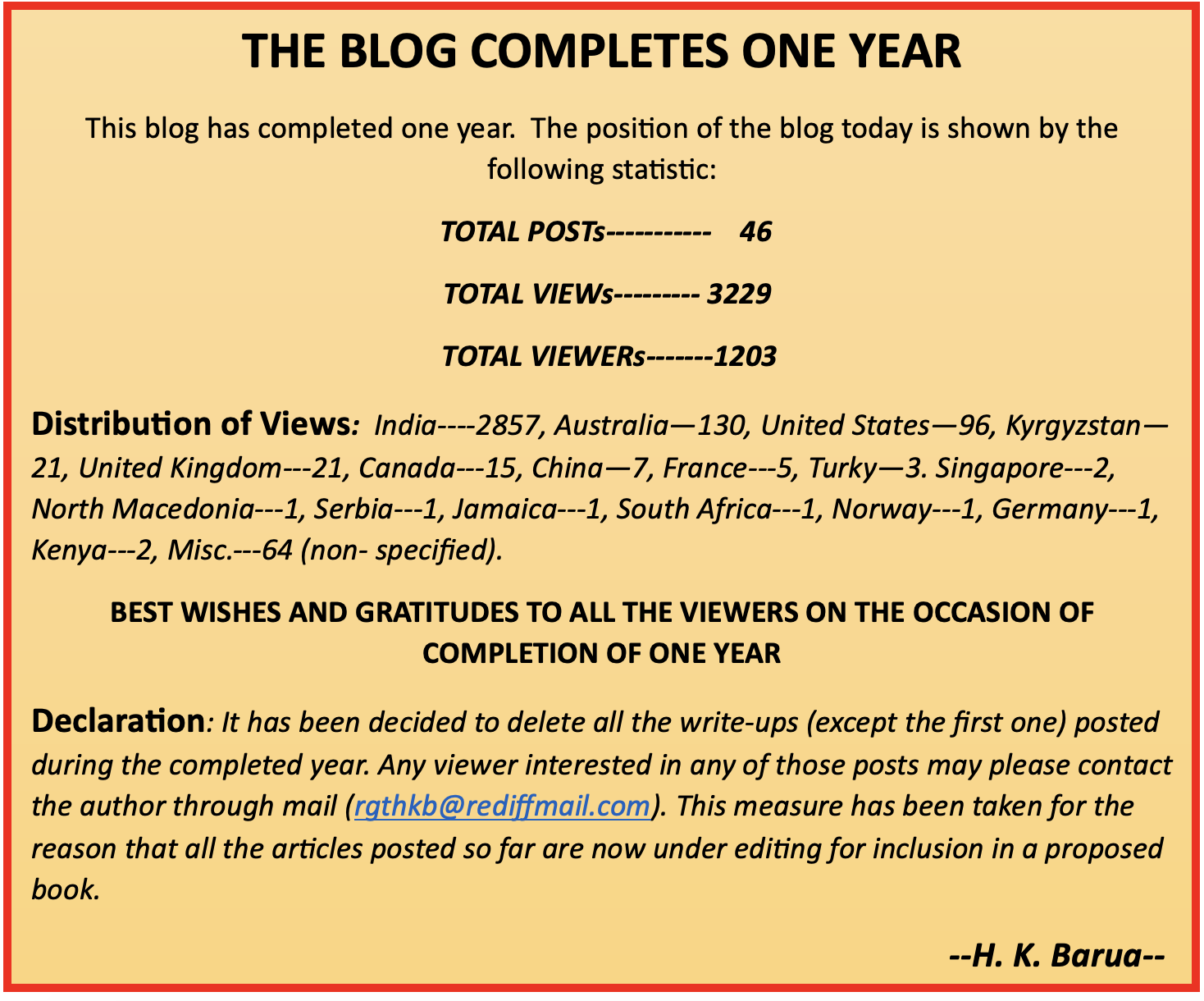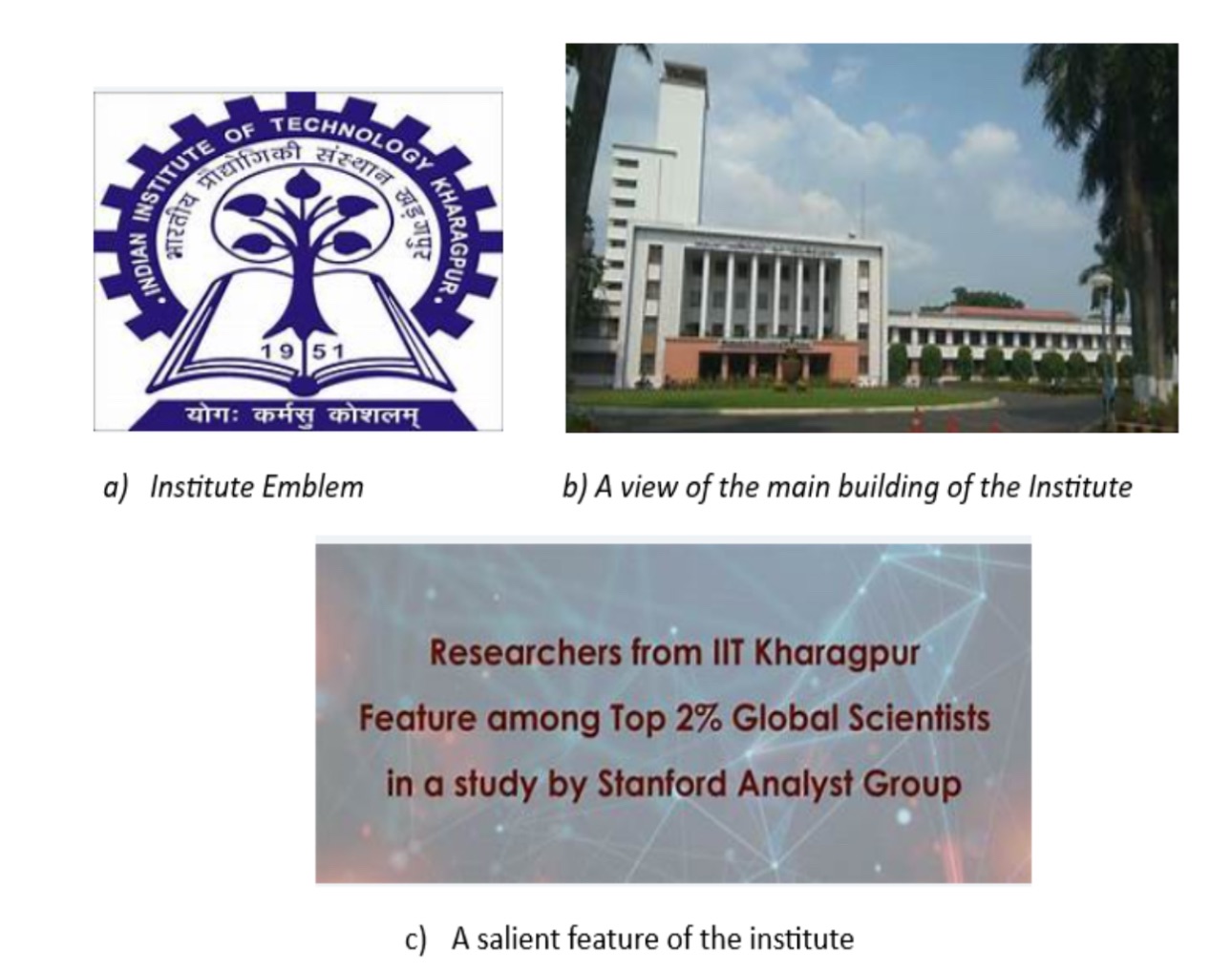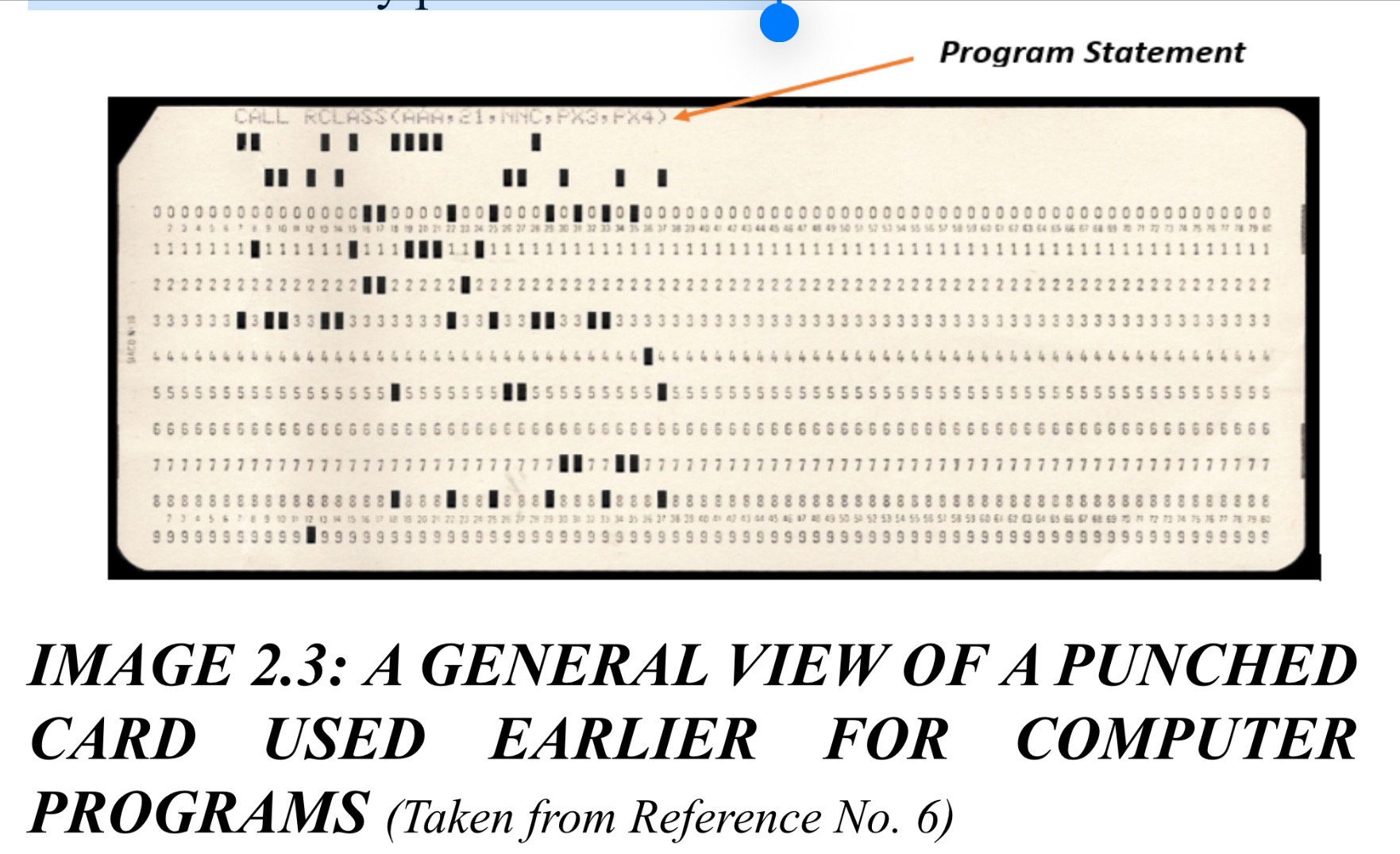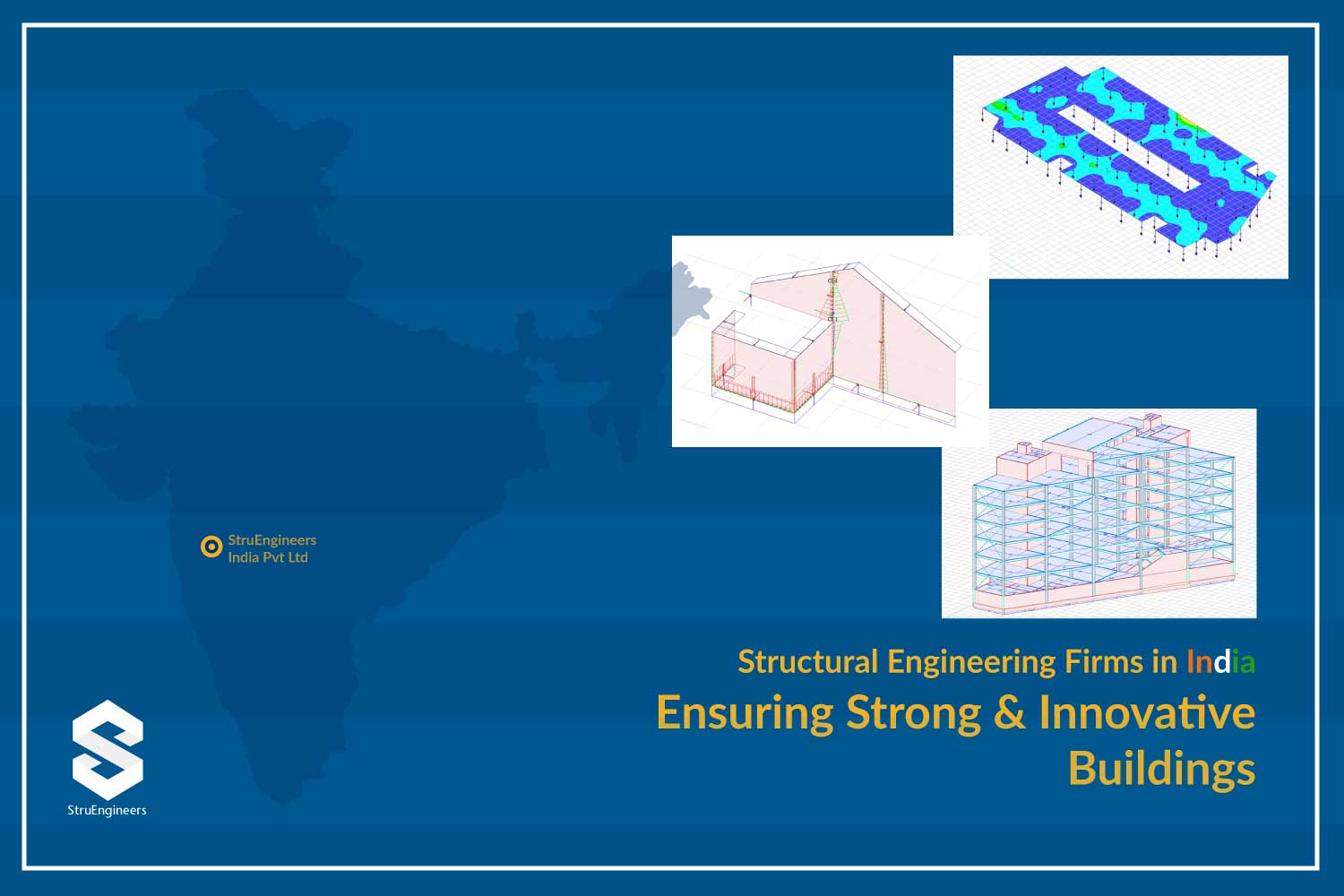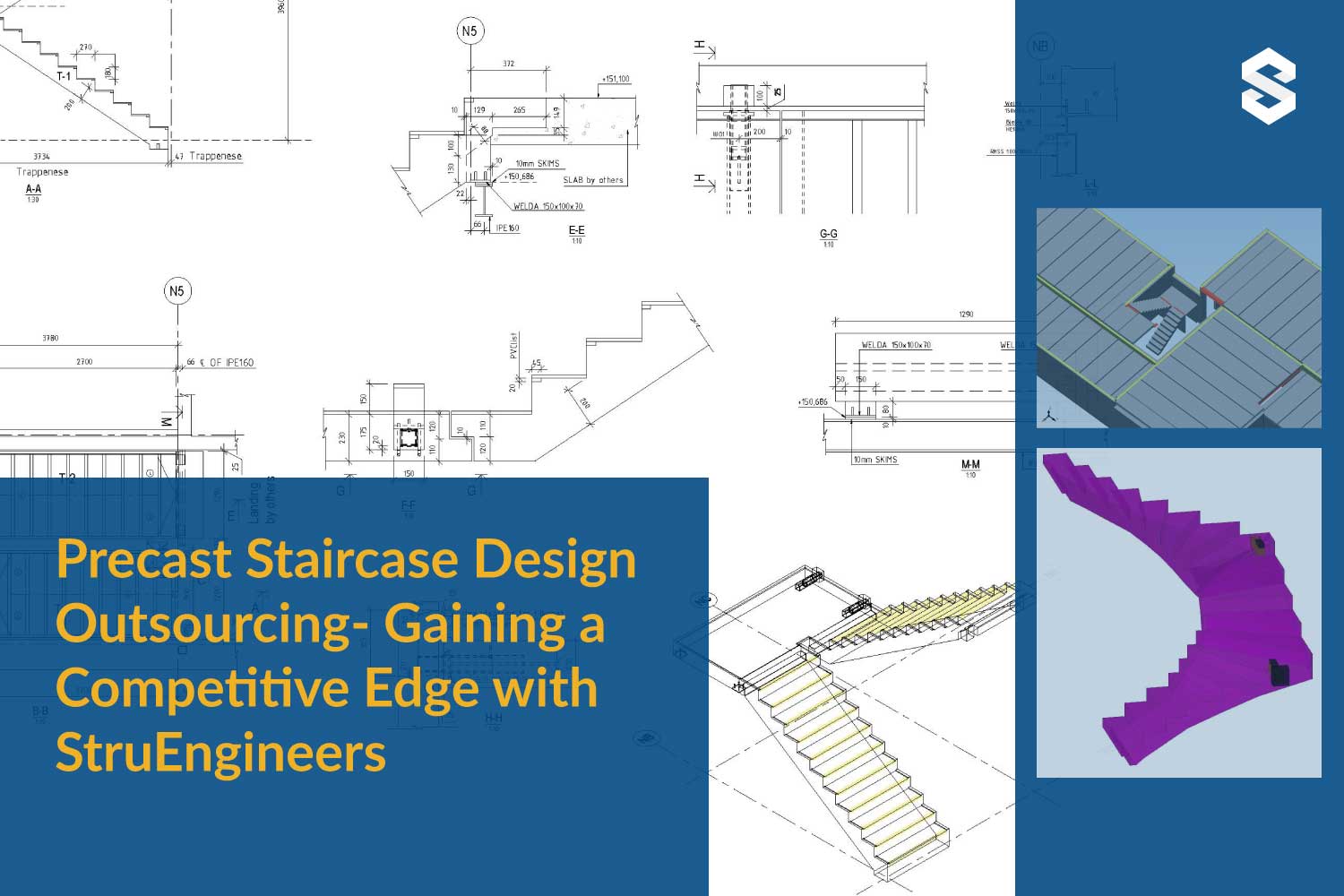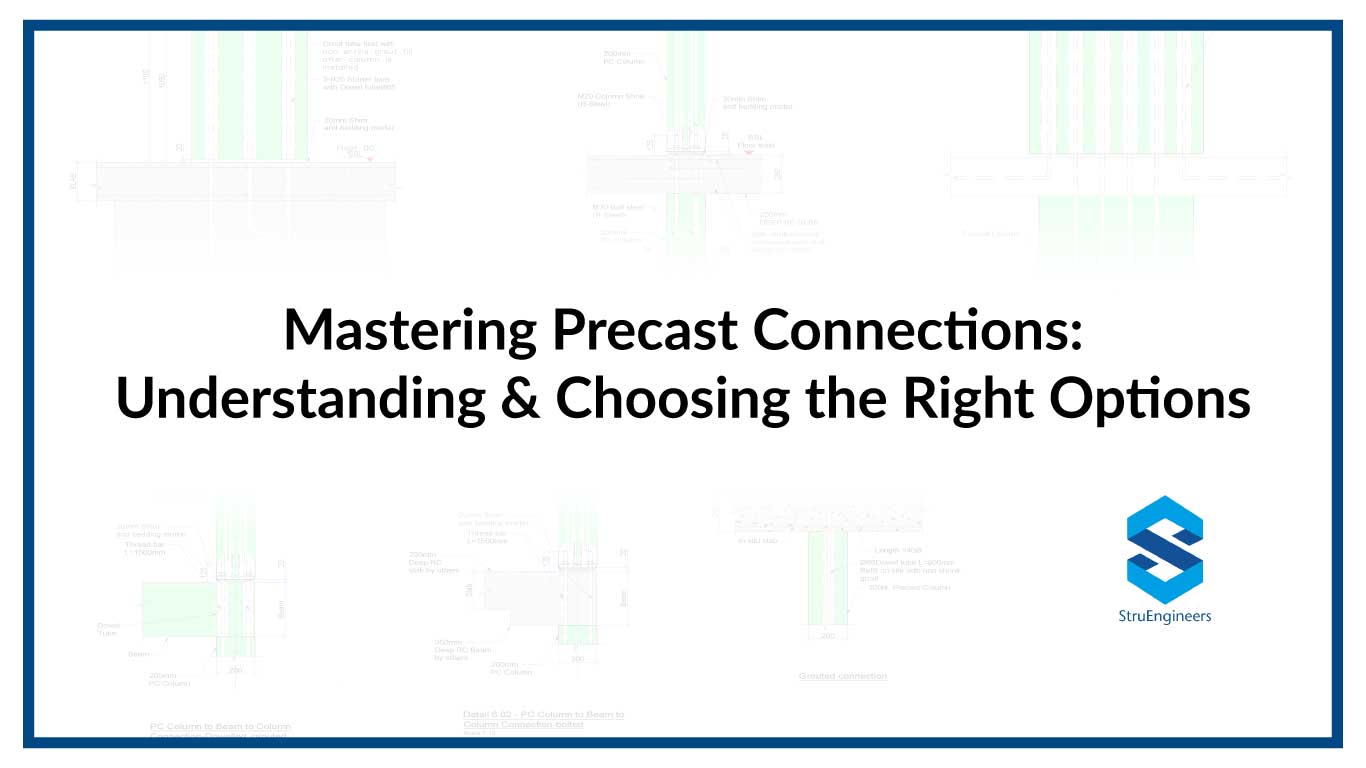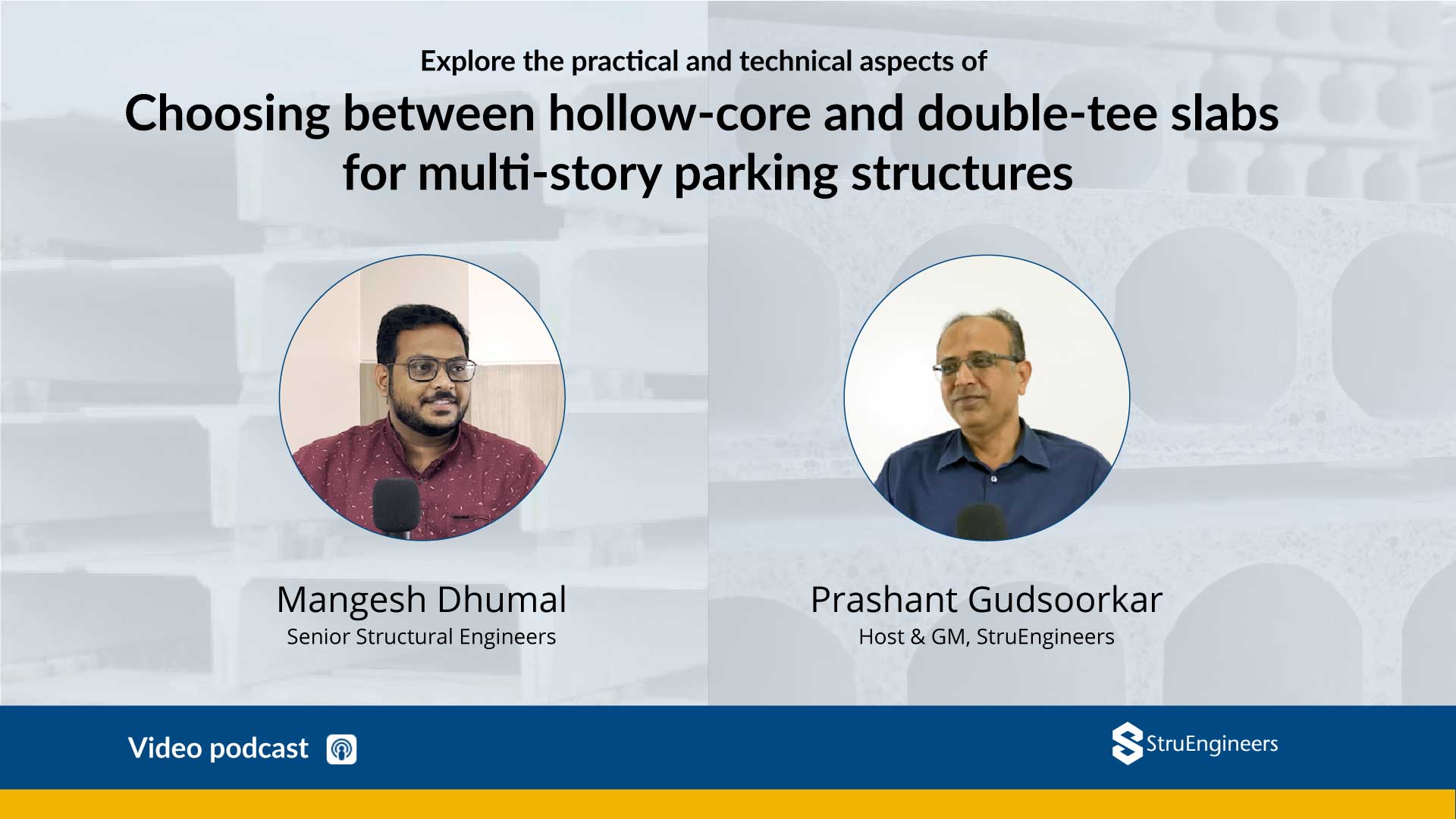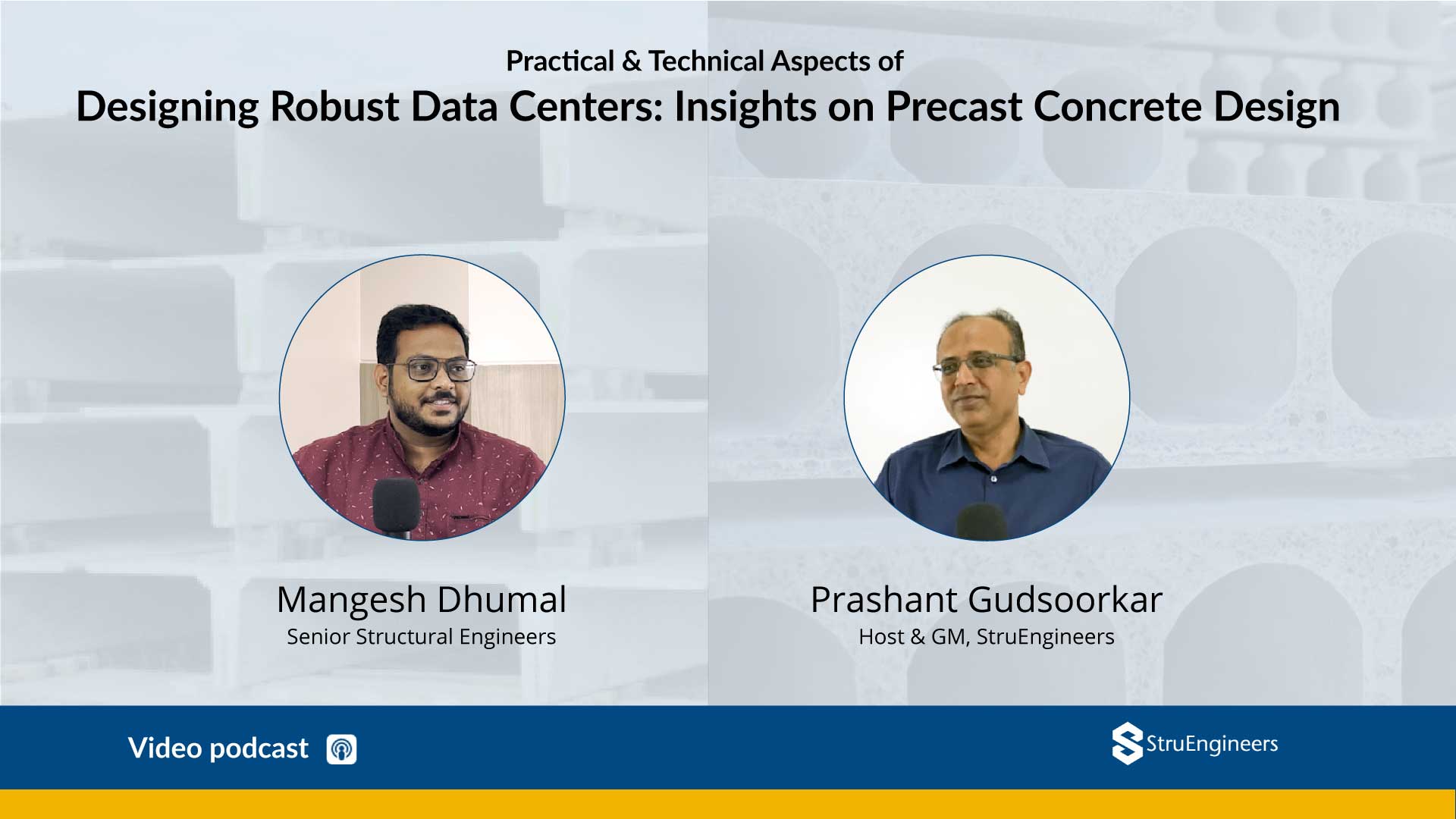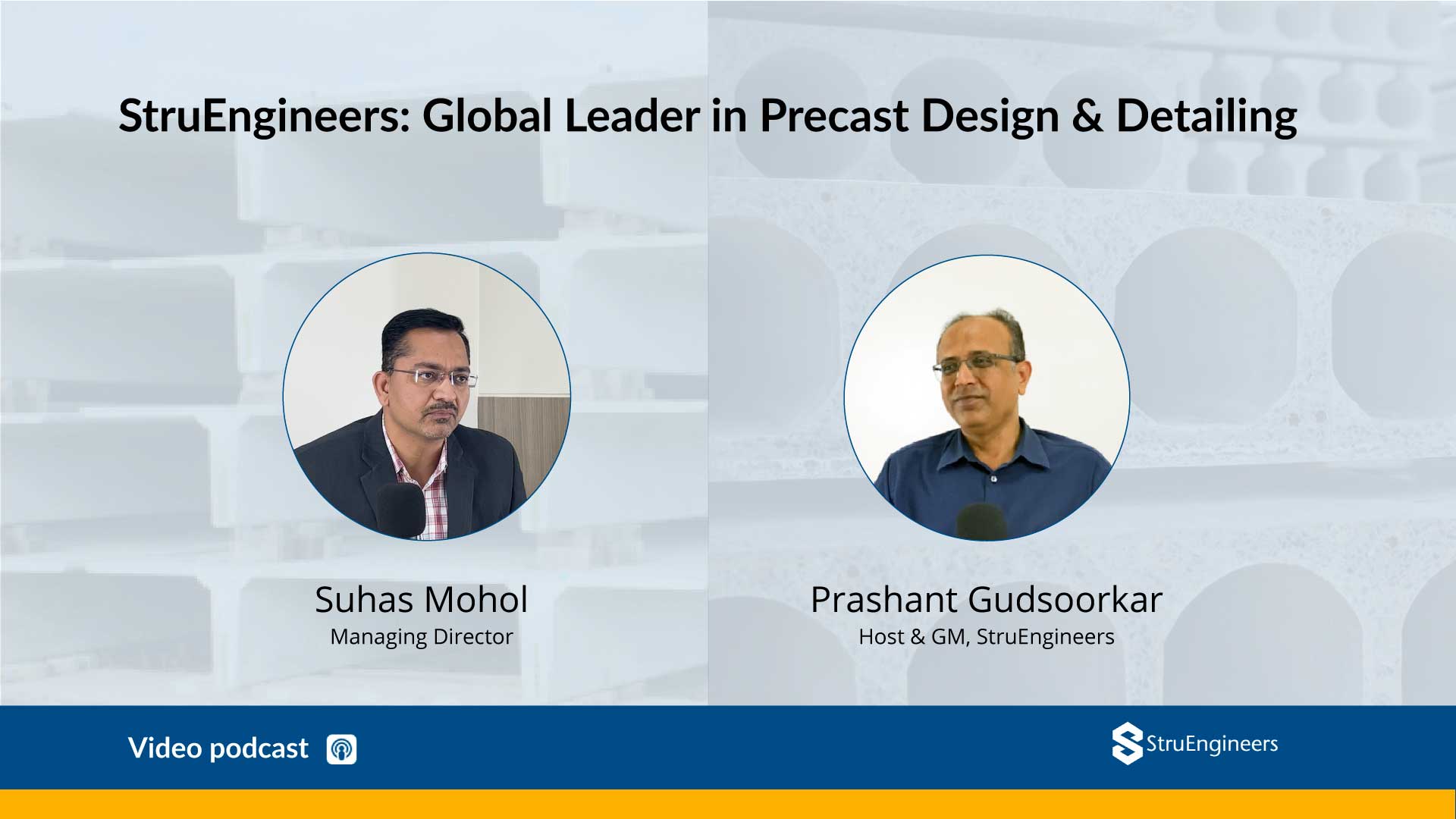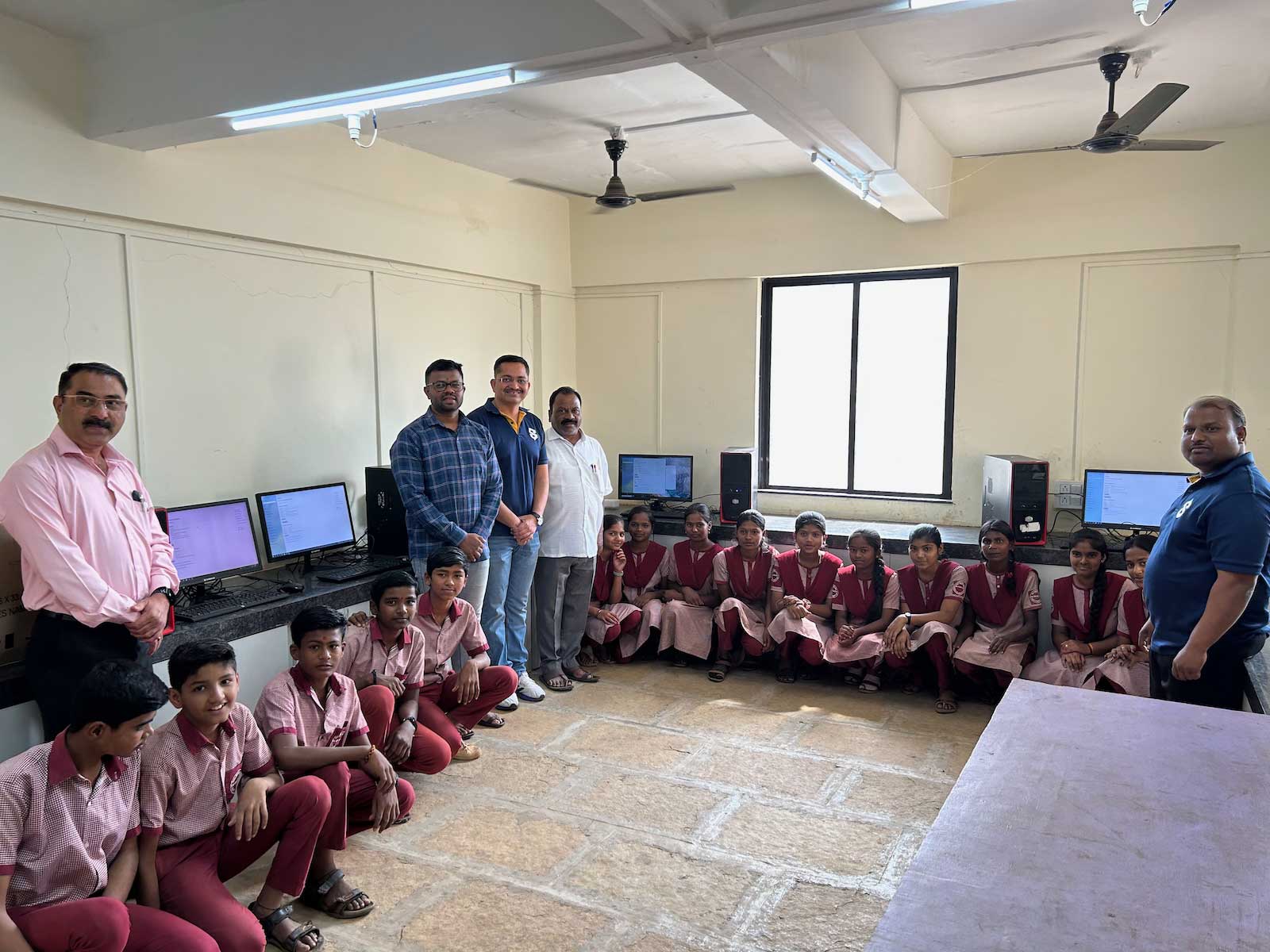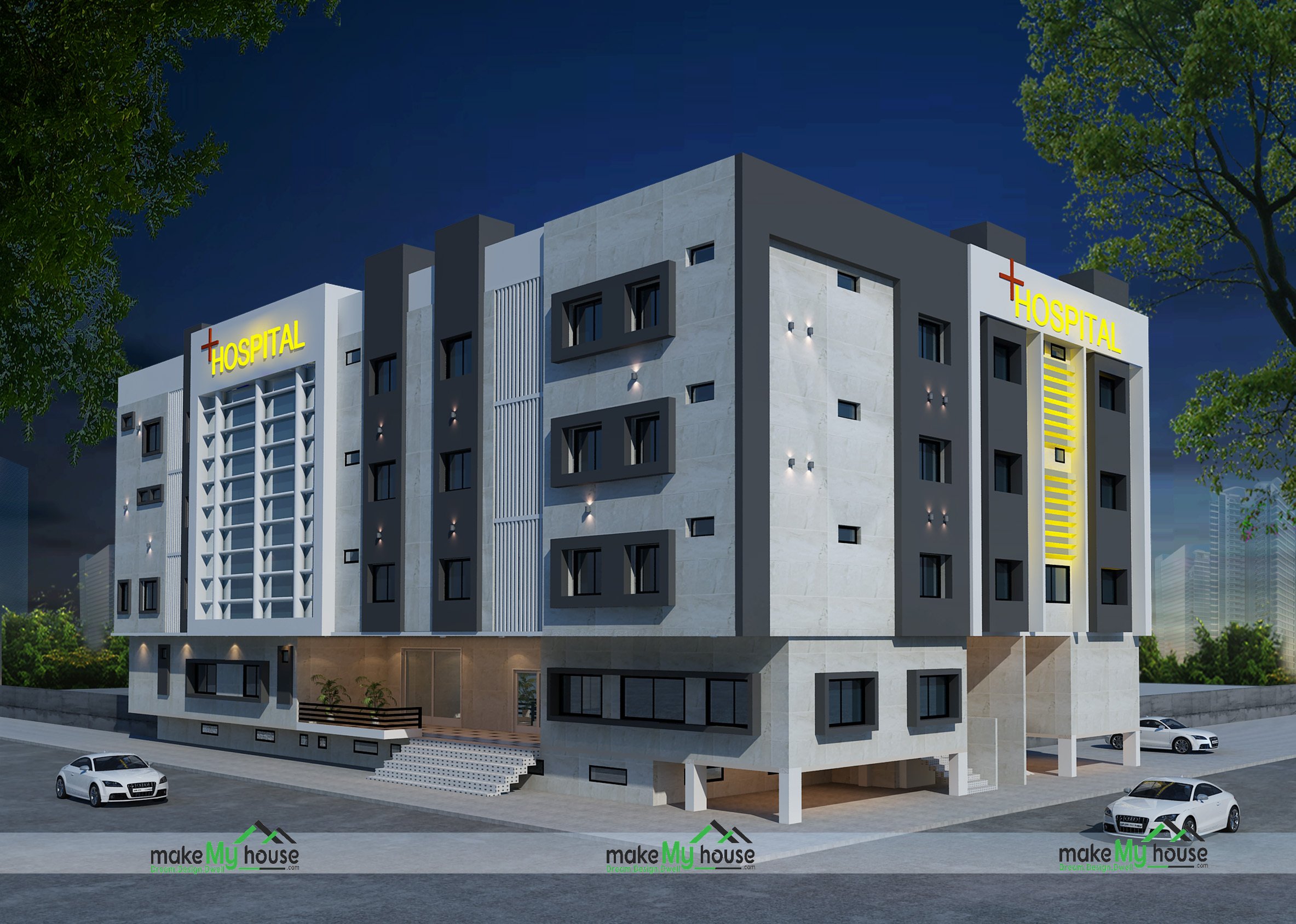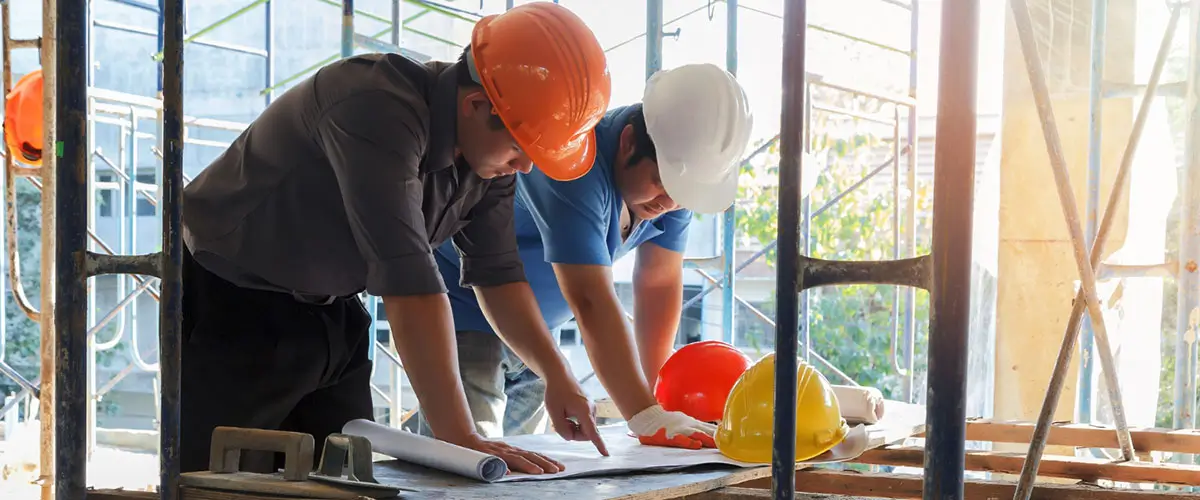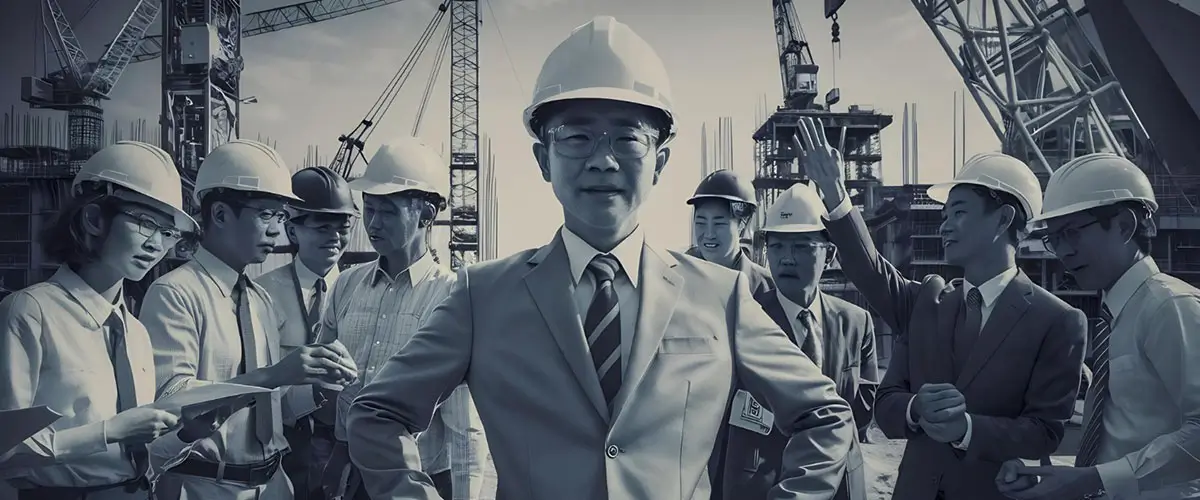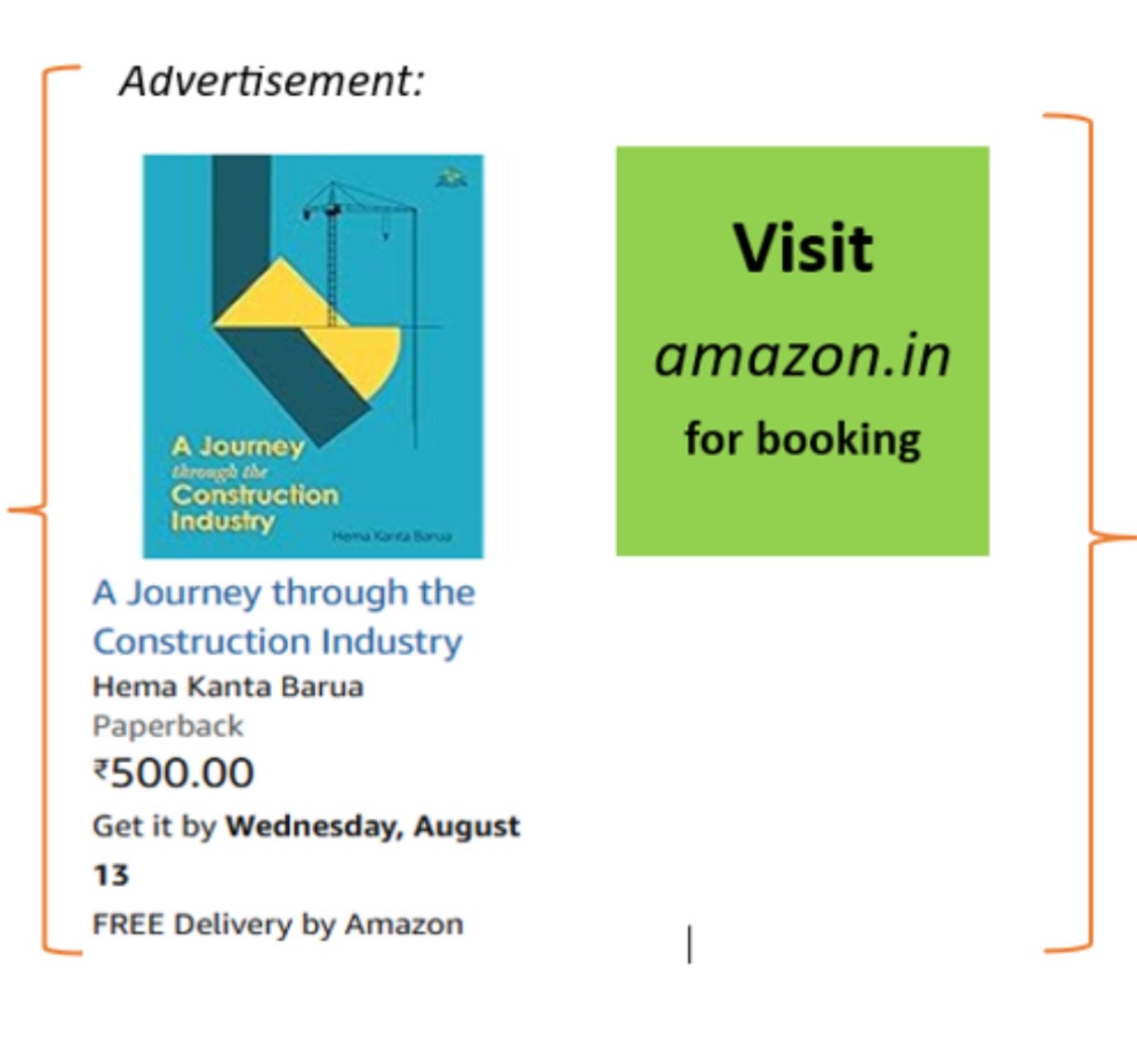
2.14 Incident C13 accountable to a Professional Challenge
2.14.1 General: Forgetting altogether about the tensions caused to me by the forgery case, I got fully absorbed in different activities of the unit of construction & maintenance. Apart from different maintenance activities, those days TES management under the leadership of then Director, Dr. N. K. Jain took up a series of developmental activities at Tocklaicomplex as well as in all its branches. Consequently, I had to undergo a phase of extremely busy schedule of works covering both aspects of new constructions and maintenance works of various types. The energy to carry on with this pressure of activities was truly derived from the fact that I got a tremendous scope of gathering my experiences in the domains of both the project management of new constructionson one hand and on the other, in respect of varieties of repair and rehabilitation works relating to different infrastructure. It was indeed a great opportunity for a civil engineer to gather experiences in both the domains under one umbrella. I was indeed very lucky.
Many challenges were faced during that period. However, only a few have been dealt with in subsequent paragraphs.
2.14.2 The incident itself: Once, the roof of a structure in Nagrakata Substation in W.B. was severely damaged by wind. The Director advised me to proceed to that place and to take the remedial measures on an emergency basis. Accordingly, I visited the site and redesigned the roof with roof structure with steel angular-sections and Asbestos sheet as the roofing material and finalised the estimated cost on item-rate basis. The estimated cost so prepared at my end was duly approved by the head of that substation, who was then a very senior Advisory Officer of TES. I had to do everything with his approval and advice. We immediately allotted the work to a contractor, a Chinese permanently settled there. That contractor normally used to do different types of construction/repairing works of that substation. The rates for each item were mutually finalised in a joint discussion with the contractor in presence of the head of the substation. The contractor was advised to start the work immediately on arrival of a technical supervisor to be sent by me from Tocklai.
The senior-most technical person available under my control was a person whom I met as my student only for one academic year in JEC. He failed to complete his B.E. course for some regions and eventually joined TES on contract basis just a few months ahead of my joining. On my return from Nagrakata, it was decided to send him for supervising the construction of the damaged roof, as already allotted to the contractor. He was specifically advised to complete the work and to prepare the final bill and submit the same with due recommendation to the head of the substation at Nagrakata for necessary payment to the contractor concerned and then to come back. He acted as per advice and on completion of the work as advised, he came back to Tocklai after a few weeks.
After a few months, I had to go to Nagrakata again in connection with the works of planning some new constructions of bungalows and staff quarters. During that period of my stay there, one day, the head of the substation gave me the bill for the work of the reconstruction of the roof(referred to in the preceding para). The bill was already paid, by then to the contractor concerned on the strength of the recommendation of my technical supervisor. The Head stated to me—Dr. Hem, this bill has already been paid. I have some reservation. So, I need your views on this bill. Naturally, I had to check the bill with reference to my design drawings and specifications already available in the concerned file of the Head’s office. To my utter surprise, I did find some deviations in respect of both design drawings and the measured quantities of the said bill and accordingly, I verbally reported the observed deviations to him (the Head of the substation at Nagrakata). However, he insisted on a written report on the said bill from my end. I had to abide by his advice on account of my official obligations to him. On receipt of my written report, he immediately called the concerned contractor to his chamber. After a few minutes, the contractor came. I still remember, how furious he (the Head) got on the sequence of happenings over that issue. Immediately on arrival of the contractor in his chamber, he closed the entrance door to his chamber and started angrily asking questions to the contractor in my presence only. He admitted the fact that he paid some amount to the technical supervisor preparing the bill and recommending the same for payment. The excess amount was only a few thousand, since the estimated cost involved for the work was not very high. On getting the due admission from the side of the contractor, the Head immediately sent complaint to the Director, TES for necessary disciplinary action against my technical supervisor.
On my return to Tocklai, I received the letter from the Director, through which I was advised to investigate the case against my supervisor concerned and to initiate disciplinary action at my end, since he (the supervisor concerned) was on contractual basis. There was, in fact nothing to be investigated into at Tocklai, as the detailed investigation was duly conducted by me at Nagrakata. The only thing I did at Tochlaiin the name of investigation was the interrogating of the person accused. On my interrogation, the accused admitted the charges levelled against him. On understanding the consequences to follow, I took an undertaking from to him to the effect of his clear admission of the charges on one hand and on the other, to his prayer for apology coupled with his declaration of assuring the management for not repeating that type of commission of corrupt practices in future. I prepared the formal report of my investigation including the declaration as given by him. I personally handed over the report to the Director and had with him a long discussion on the issue of action to be taken in presence of the Administrative Officer. Eventually, it was decided to issue a warning to him (the accused) to the effect that he was excused for that time in view of his declaration and that he would face termination in case of any future offence if committed by him. Accordingly, the administration issued the same. He was excused, as he had a number of positive attitudes such as a workable knowledge in the domains of construction activities, a tenacity to do hard works etc. However, an extra burden of keeping a vigilant eye on his activities on me naturally developed as a consequence of that incident. Anyway, I had to carry on with this type of unexpected burdens on my shoulders. In fact, at that stage I was determined to carry on under any eventuality till the time of submission of the FER (as stated earlier) of the forgery case by the EO concerned for the reasons, as dealt with earlier.
2.15 Incident C14 accountable to a Professional Challenge
2.15.1 General: While trying to wind up this chapter on fighting the challenges faced during my service with TES, I have been flooded with a lot of thoughts, primarily created by a news captioned as “Two important departments of TES closed down—–’ (translated into English from the caption in Assamese). This news appeared in the Assamese Daily ‘The Dainik Janambhumi of July 13, 2025. The original news (in Assamese) has been appended to this article as Appendix IIA. The portion marked ‘A’ in the Appendix IIA has sharply reminded me of the conversation I had with Dr. N. K. Jain(then Director of TES) in the middle of 1984/1985 (not remembered exactly) in his office. It went as—Dr. Hem, I have failed to pull on with my top management. I have decided to resign. I knew that, by ‘top management’, he meant the Council of Management, primarily dominated by members from tea-industry and based in Kolkata, W.B. Being truly disheartened on his decision, I managed somehow to respond—-Sir, can your decision be reconsidered! The prompt answer came—No Hem, that stage is over now. Finally, he resigned and left TES. I still remember the day on which he handed over his charge to the seniormost officer in presence of all the officers of TES in the then -lecture hall.

stageI fully endorse the gist contained in the portion marked ‘A’ in Appendix IIA. Dr. Jain commanded a high respect for his expertise in the domains of various aspects of tea-industry coupled with his dedication and strong commitment for the developmental activities which he initiated in the TES complex as well as those in all of its branches elsewhere. I had the opportunity of playing my role in the capacity of the project manager. Even today, I rejoice the memories of my roles played in respect of planning, design and execution of many infrastructure including laboratories, bungalows, staff quarters etc. The development of an independent staff-colony in an area outside the main TES complex (then existing) did get high appreciation even from the EU, which truly did not have a cordial relationship with the management during those days.
An image of the staff-colony as existing today will be attached at a later stage
Dr. Jain’s good relationship with CSIR (as referred to in the media report in Appendix IIA) got well-reflected in his subsequent appointment as the Director of a CSIR newly created laboratory in North India. Had he (Dr. Jain) not left Tocklai then, possibly the situation faced today (as reflected by the print media—Appendix IIA) would not have developed.
The period of my continuity of service with TES after Dr. Jr. Jain’s resignation turned out to be more challenging for the lack of the kind of support I used to have from him. I still continued, since I decided to leave Tocklai only after the submission of the FER of the forgery case (as stated earlier)by the EO. It was truly that stage at which I developed a feeling to the effect that there was some pressure on the EO for delaying the submission of FER as long as Dr. N. K. Jain was the Director. By then, the Administrative Officer (Mr. K. R. Gopalan) too left. However, I did continue for the final settlement of the forgery case knowing very well that my turnto submit my resignation would definitely come sooner or later. I continued working in TES under the changed environment after the exit of Dr. Jain.
I did face a number of challenges. However, at this stage it has been decided to wind up this chapter of my professional life by stating only one more incident accountable to professional challenges fought during my service with TES, as briefly dealt with below.
2.15.2 The incident itself: This incident relates to the construction of some staff quarters at the Thakurbari (Tejpur) advisory branch of TES. The planning, design and construction of these quarters were done under my project-management. The tender documents including the schedule of items of works were duly prepared. However, tender papers were submitted only by one contractor, who was, in fact a known contractor to the then head of the advisory branch. The head was then Mr. B. Borbora, who, at a later stage became the Director of TES. The recommendation for the allotment of two staff quarters to the contractor was given from my end. Eventually, the work was allotted and duly completed within the stipulated time in all respects.
At a later stage, the auditors sent by the top management from Kolkata raised a strong objection for the allotment of said work of construction of the staff-quarters on the basis of a single tender in violation of the standard requirement of at least three tenders. Naturally, the burden of defending the situation eventually came to my shoulder. I was well aware of the basic conditions on which a recommendation for the allotment of a contract job have to be based. In fact, these conditions were duly taken into a sincere assessment in cases of all the allotments recommended from my end in the capacity of a project manager irrespective of the clients I worked for all along. The incident under discussion was also not an exception. In the process of evaluating the weightage of these conditions, what is important is obviously a true understanding of all the conditions. For a contract based on item-rates, these conditions primarily include (a) the reasonability of quoted total cost and (b) the reasonability of quoted rates for individual item of works. Obviously, the reasonability under both (a) & (b) needs to be analysed to ensure the completion of the contract with the desired quality, as conceived in design and within the stipulated time. The exercise carried out for the analysing of the reasonability under both (a) and (b) has got to be well reflected in the Comparative Statement prepared on the basis the official estimate on one hand and on the other, the rates quoted by the contractor/contractors. Therefore, the engineer/project manager preparing the comparative statement is expected to have the adequate knowledge and experiences in the domains of works involved in the relevant contract. It is truly the comparative statement that forms the firm basis for a genuine recommendation for the allotment of a particular contract. To what extent a comparative statement leading to a firm recommendation for allotment is genuine in the truest sense of the term is dependent on the honesty and integrity on the part of the engineers/project managers responsible for preparing the same, in addition to the required expertise on their parts in the relevant domains, as already stated above.
In view of the brief points relating to the preparation of a genuine comparative statement, as stated in the preceding para, to prepare an appropriate response to the auditor’s objection to the allotment of the work on the basis of a single tender, in fact did not take much of my time, nor did it worry me much. I had to refer to the appropriate file in my office to locate the comparative statement prepared at my end for the contract under discussion. On the basis of the said comparative statement, the report to be sent to the top management through the advisory officer of ThakurbariAdvisory Branch was prepared within a day. The gist of the report was based on my utmost importance attached to the factors of reasonability of the cost, quality and completion time of the project involved rather than on the necessity of at least three valid tenders, as raised by the auditors. It was highlighted in the report so prepared to the effect that the allotment was truly made at a total cost much lower than the one quoted in the tender of the single contractor involved. The reduction was the result of a negotiation conducted prior to the allotment order with the contractor on the basis of the comparative statement concerned. The non-pursuance of the auditor’s objection after the receipt of my response implied that the top management of TES was satisfied with the response given from my end.
The reflection of this incident on me has been truly ever-lasting during the whole of my professional life continued thereafter. Some of similar incidents will be further dealt with at a later stage of this series of my articles. The significance of giving importance to the set norms of having at least three tenders for the proper allotment of a construction project truly consists in the creation of a positive competitive atmosphere among the bidding contractors. However, I had many cases of dilution of this fundamental objective of laying stress on the minimum requirements of three tenders during my long professional life. The said dilution has been subsequently caused by the growth of a culture that may be appropriately termed as collusion among contractors bidding for a particular construction project coupled with the prevalent commission structure of the hidden type, as apparently existent in today’s construction industry. Even I too had a number occasions in which attempts were made to trap me into this culture of collusion among bidding contractors. I succeeded in protecting myself against this type of collusion only with the principle of strong reasonings for arriving at the appropriate cost recommendable for the allotment of any construction project. I am a strong believer as well as a strong advocator of the recommendation of the type described through the incident already dealt with herein. Truly, I used to analyse the tenders received for each and every construction project for which I had to prepare a comparative statement for arriving at a cost to be recommended for approval of the necessary allotment, the major parameters taken into account being the official estimates, quoted costs (as per tenders) including the rates for individual items of work, comparison of the quoted total costs including item-rates with those of other SoRs with cost index as applicable. The analysis of this type does demand a sound knowledge and skill in the concerned domains on the parts of the engineers/project managers, in addition to their strong commitment to the task taken up.
2.16 Concluding Remarks
The time for closing Part C (Figure 2.1) has now come. By then, there had been many changes in the local management of TES. On a particular day (sometime in the middle of 1986),I was called by the Director-in-Charge (who took over from Dr. N. K. Jain) to his chamber. Accordingly, I met him and I was told by him—Dr. Barua, you know, the FER for the forgery case you fought so hard has been submitted eventually. I immediately responded— May I please have a look on the FER! He was reluctant to show the report, in spite of the truth that I was the main person defending the case on behalf of the management. However, he stated—-Dr. Barua, I understand, you have been implicated in the case. Being a bit disheartened, I responded—Ok Sir, I will come back to you after ascertaining the correct position in respect of the findings of the EO. By saying so, I left his chamber and went back to my office. Over a cup of tea, I cooly thought over the situation and came to the conclusion to the effect —-I must take care, otherwise an attempt may be made to truly implicate me, as indicated by the Director-in-charge sounded. My presumption to this effectwas strengthened by the fact that the father of Mr. P (main accused in the forgery case, as stated earlier) was a popular Accounts Officer in TES and he (the father Mr. P) had a good relationship with all senior Officers including the Director-in-Charge. Therefore, I took an appointment with the EO concerned that day itself over phone. Accordingly, I met the EO that evening itself in his residence in the city.
I briefed the EO about the conversation I had with the Director-in-Charge including the aspect of the possibility of implicating me in the case. On hearing me, he got irritated and stated in an angry voice—-I know the section of the people of TES, who tried so hard to implicate you at any cost. They even put pressure on me to delay the submission of my report. He then brought his office copy of the FER and gave that to me by saying—Dr. Barua, you yourself read it and find what my final report states. I cooly read it and found the gist as (exact words are now not remembered) —-Mr. P, the main accused was held fully responsible for forging my signature on the bills on which my alleged signatures were identified and declared to be forged at my end primarily on the ground that he did not appear before EO for his (Mr. P’s) defence.
Next day, the first thing I did in the office was to meet the Director-in-Charge for a personal interaction with him. I went to his office and stated to him—-Sir, I went yesterday evening to the EO’s residence and studied the findings of the enquiry report. Mr. P. has been fully and clearly held guilty of forging my signatures. There has been not a single word implicating me in the case. Naturally, the management has got to take the appropriate actions on those held guilty in the FER. Any attempt to be made by any quarter to implicate me will be legally challenged at my end. By saying so, I left his chamber and resumed my normal activities.
After some days, the appropriate actions on the forgery case were taken —Mr. P was dismissed from his service with TES, other accused being duly freed from the alleged charges. As a result, all murmurings about my roles in the forgery casecame to an end. I too started preparing myself to finally submit my resignation at an opportune time. I had to wait for sometime in view of my on-going preparations to quit TES.
Finally, the month of September, 1987 came. On a day, I put up an application personally to the then Chairman of the Council of Management during his visit to Tocklai. Through the said application, I prayed for upgradation of my position, knowing very well that the same would be turned down, since I was only a supporting officer in that predominantly a research institute. As presumed, the turn-down letter promptly came from the Chairman’s end. The next day itself, I submitted my resignation letter and eventually I got the due release from my service with TES.
My journey through my professional life in TES ended. However, the benefits derived during this period of about nine and a half years have been, indeed manyfold particularly in respect of main domains of construction industry such as practical experiences covering planning, design and execution of various infrastructure, repair and rehabilitation of buildings of various types, accounting and budgeting and other aspects of project managements (as discussed in details through my book9). Therefore, I have been ever grateful to Tocklai Experimental Station (now Tocklai Tea Research Institute).
The final message infused into my mind by the challenges fought, as well reflected through the incidents briefly dealt with in this chapter of my professional life has been the one that has kept on reminding me of the strength and courage afforded by the clean path of a professional life with the commitment to and love & respect for dedication, honesty and integrity.
(The first article on the next Chapter of fighting challenges will be the next Post of the Blog)
Reference:
9. A book entitled ‘A Journey through the Construction Industry’ by Dr. H. K. Barua, May, 2025, Excellar Books (Global Press), Kalkota, W.B.
APPENDIX –IIA: THE NEWS RELATING TO TES, THAT APPEARED IN THE DAINIK JANAMBHUMI OF JULY 13, 2025





